Use [CONTR + F] to search this page and pull down this scroll bar to see everything. 
Use [CONTR + F] to search this page and pull down this scroll bar to see everything.
|
|
This page contains pictures of 422 maximumcards (a long way to scroll down). Here are the years you can choose to have a look at them: |
|
1919 |
 Tram in Constantijn Huijgensstraat (street) in Amsterdam.  Tram at Herengracht in The Hague. Back to the top |
|
1920 |
 Tram in Eendrachtsweg (street) in Rotterdam. Back to the top |
|
1932 |
|
1939 |
 The first Dutch steam locomotive ran from Haarlem to Amsterdam on 20th September 1839. Its name was De Snelheid (The Speed). It was one of four locomotives which ran the service for the "Hollandsche IJzeren Spoorweg Maatschappij". The other three were: De Arend (The Eagle), De Leeuw (The Lion), De Hoop (The Hope). They were British made. A replica is now on show at the Utrecht railway museum. |
 Another one with the first Dutch steam locomotive which ran from Haarlem to Amsterdam on 20th September 1839. A different cancellation stamp this time. |
|
1955 |
 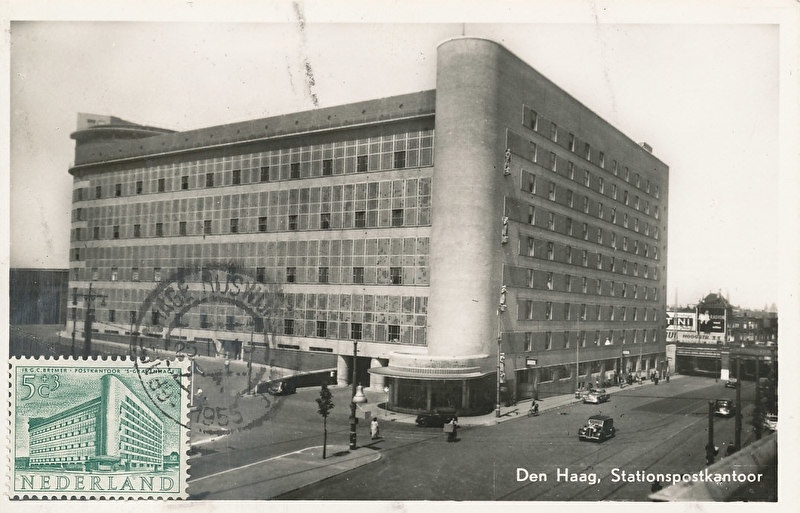    
The Hague post-office annexe railway station and the railway viaduct were designed by architect Bremer. |
     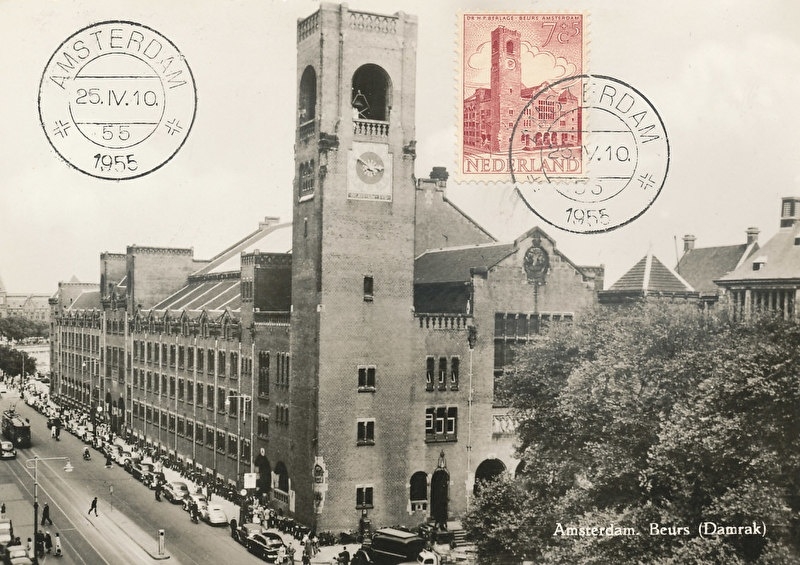
The Amsterdam Exchange was designed by architect Berlage. The tram lines run in front of it. Back to the top |
|
1964 |
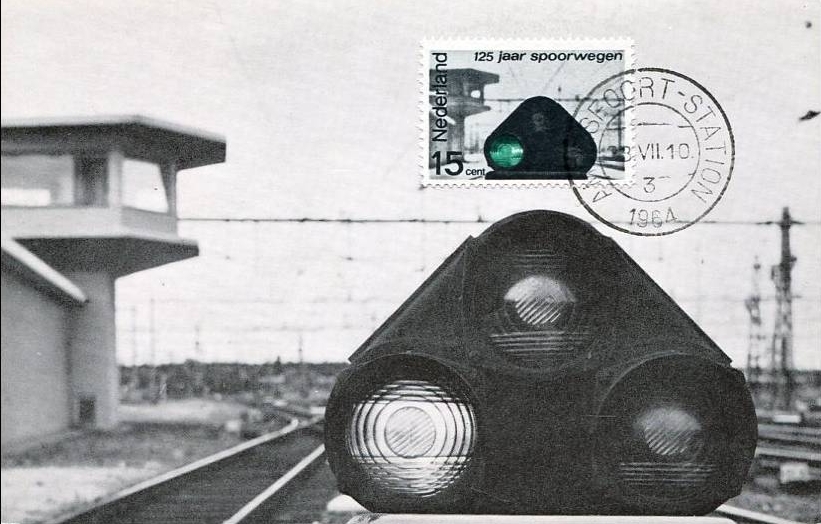    On the occasion of 125 years Dutch railways this stamp of a modern station safety light at Amersfoort railway station was issued. |
   Also on the occasion of 125 years Dutch railways: a 1964 electric train, the so-called Dog's Head. These EMU's of the 501 series have eight 34 kW traction engines, fed by 1500 Volts AC overhead contact wires. They drove up to 140 kilometres an hour. |
 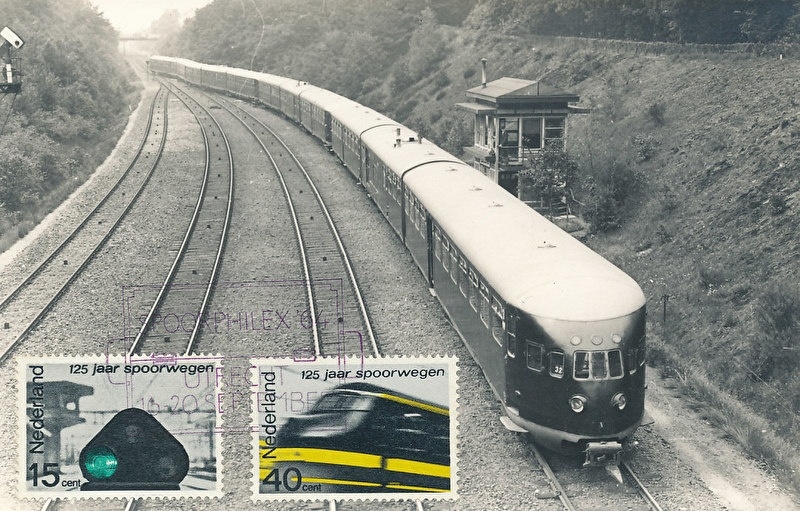  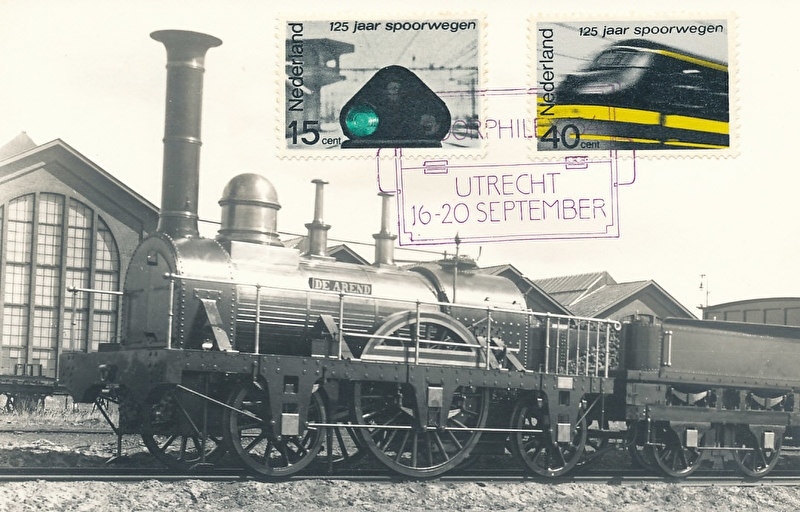     Both 1964 commemoration stamps on several maximum cards. Back to the top |
|
1968 |
  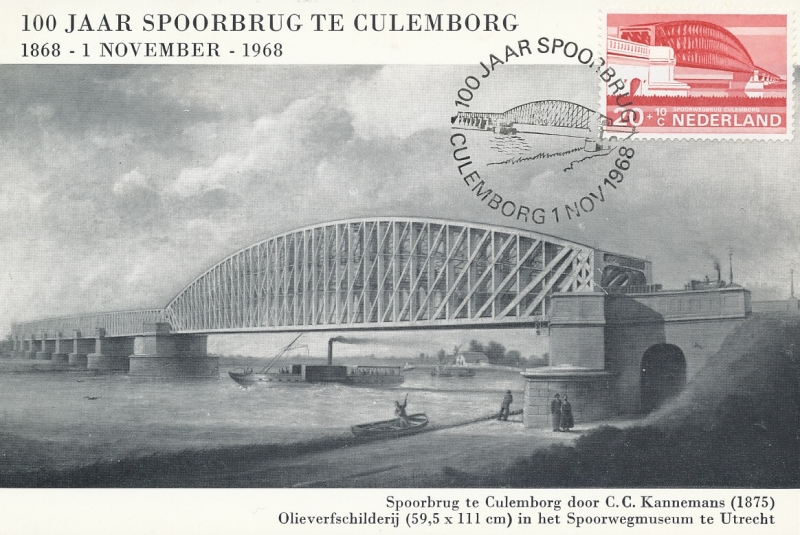 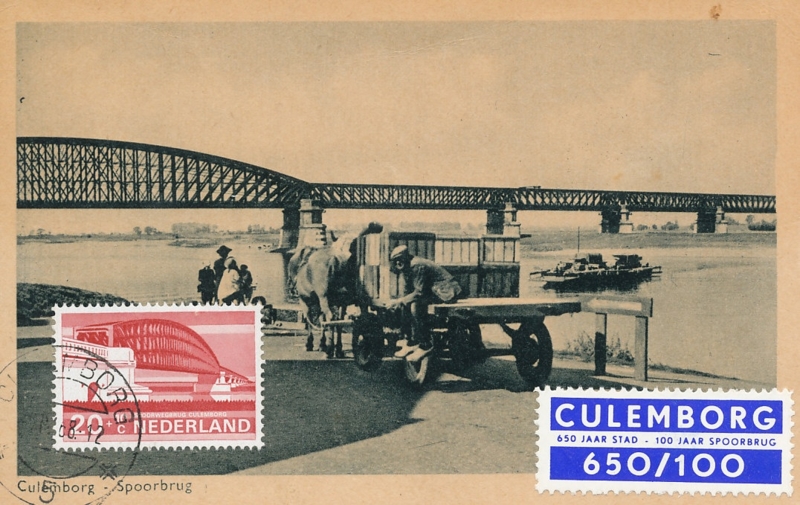    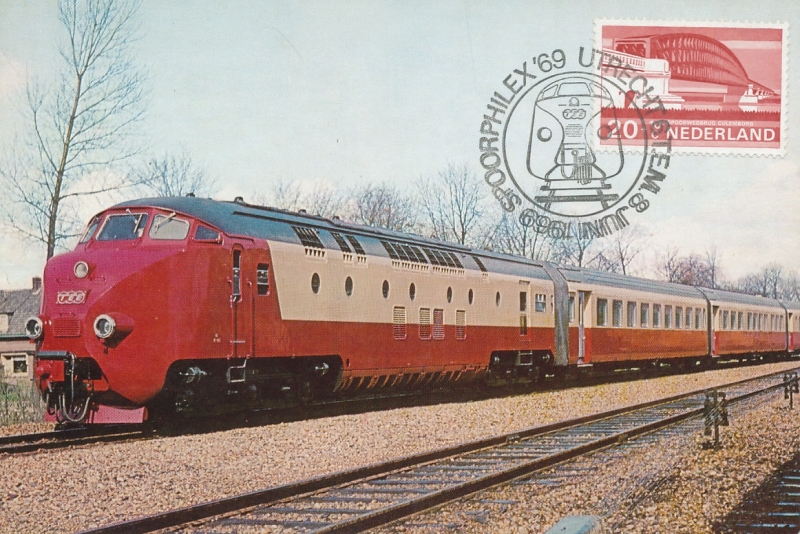 The Culemborg Railway Bridge in a series of 5 bridges, an emission of summer stamps. The Culemborg bridge was built in 1868 and the main span is 154 metres, the longest span in Europe for many years. After World War II the iron bridge was replaced by a steel one. |
 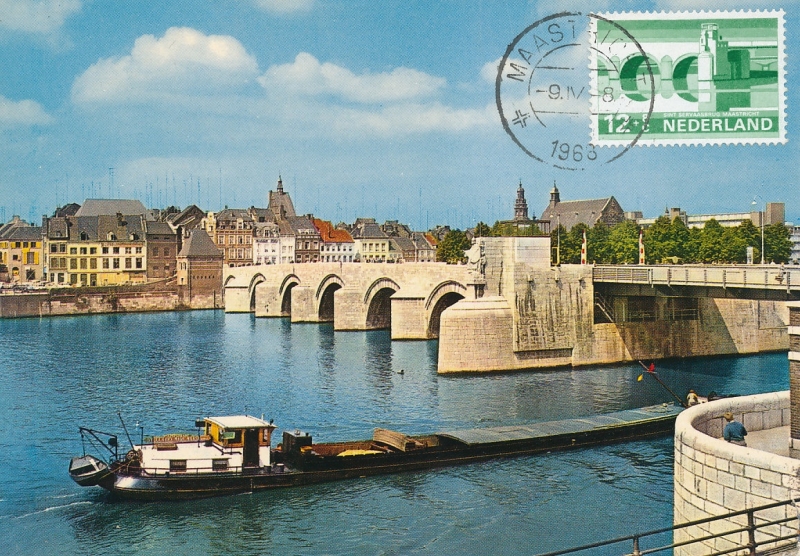 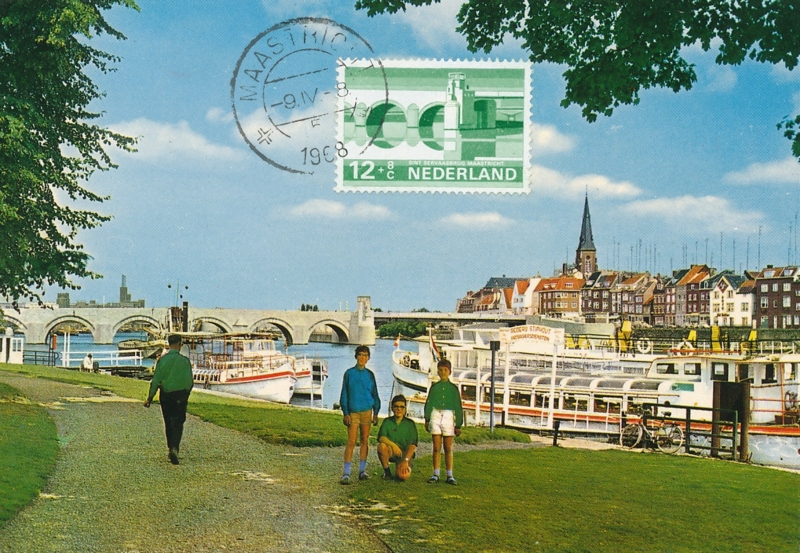  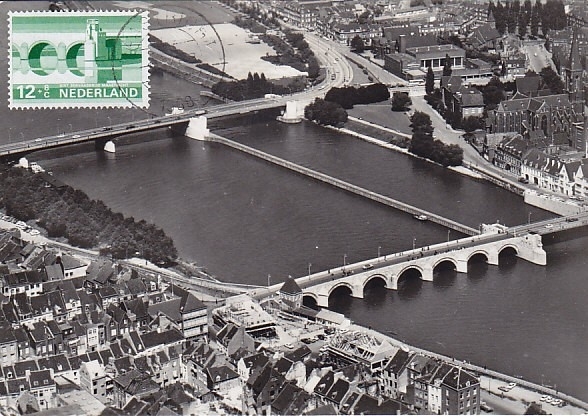 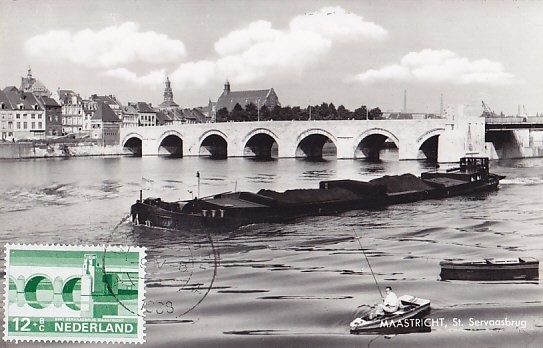 There were tram rails on St. Servaas Bridge in Maastricht from 22 April 1896 till the end of World War I (1918). Tram service ended on 14 August 1914. Back to the top |
|
1969 |
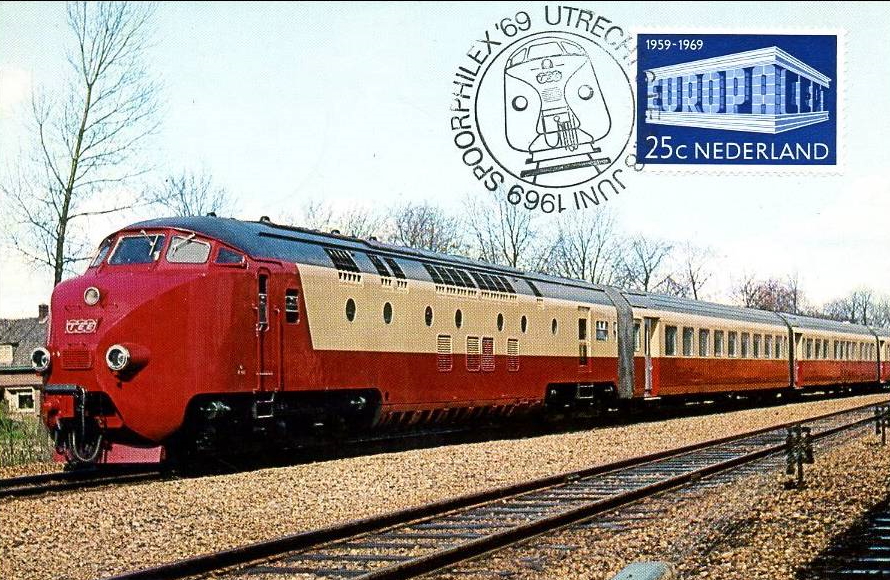 TEE train to connect The Netherlands to the rest of Europe with a cancel of Spoorphilex stamp exhibition. |
|
1975 |
   When the new Amsterdam metro system had to be built, several Amsterdam buildings would have to disappear. This was the cause of several protest demonstrations which ended up in riots. The stamp shows the area where the then new Amsterdam underground railway system was to be built. |
 There were tram tracks in the streets near the Jewish synagogue. Back to the top |
|
1980 |
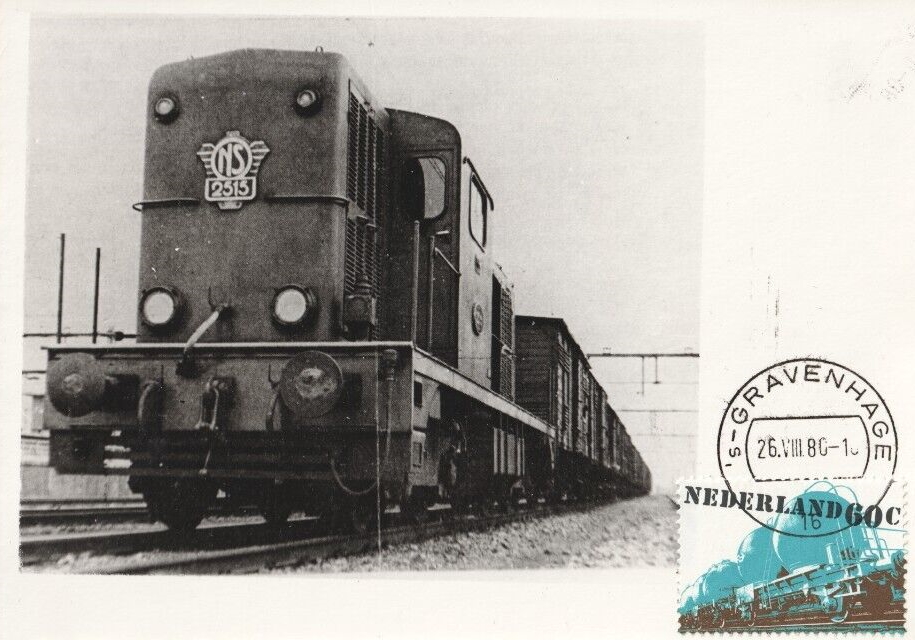 NS 2515 diesel workhorse with stamp showing hopper wagons.  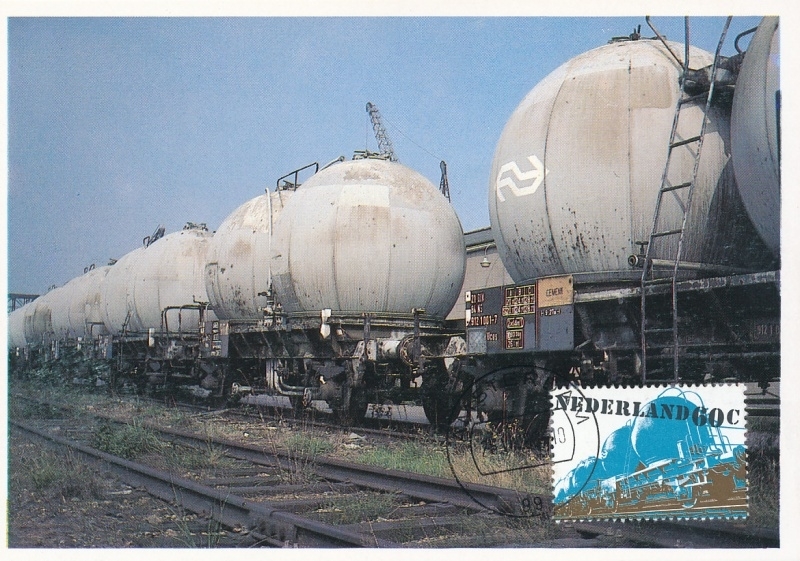 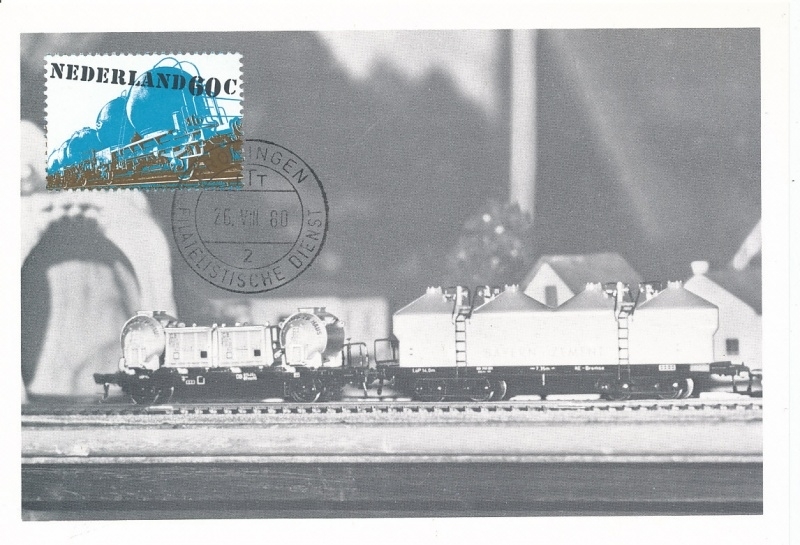 In the traffic and transport series, rail transport is represented by the UCES type hopper wagon. |
|
1981 |
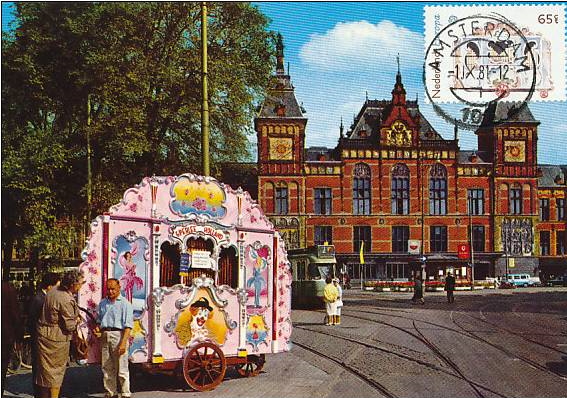 Th stamp shows a barrel organ but the card shows Amsterdam Central Station and a tram. Back to the top |
|
1982 |
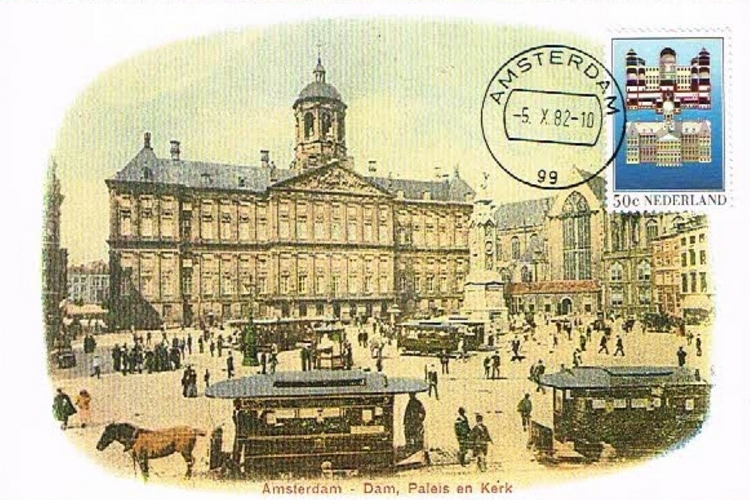
Horse trams at the Amsterdam Dam Square. Back to the top |
|
1985 |
|
1988 |
 17-05-1988: The stamp is the first of a 1988 series of two: environment and transport. This one is about unleaded petrol and modern means of transport. The postcard shows a Japanese high-speed bullet train. |
 17-05-1988: The stamp is the second of a 1988 series of two: environment and transport. This one is about safety on the road. The postcard shows a French SNCF high speed train (TGV). Back to the top |
|
1989 |
  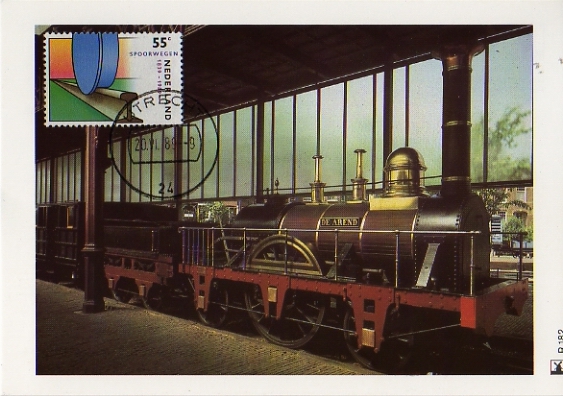      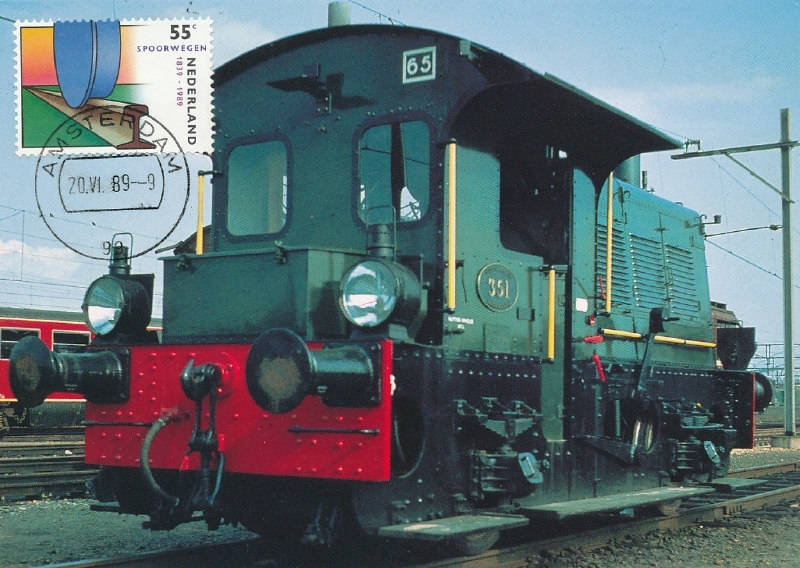      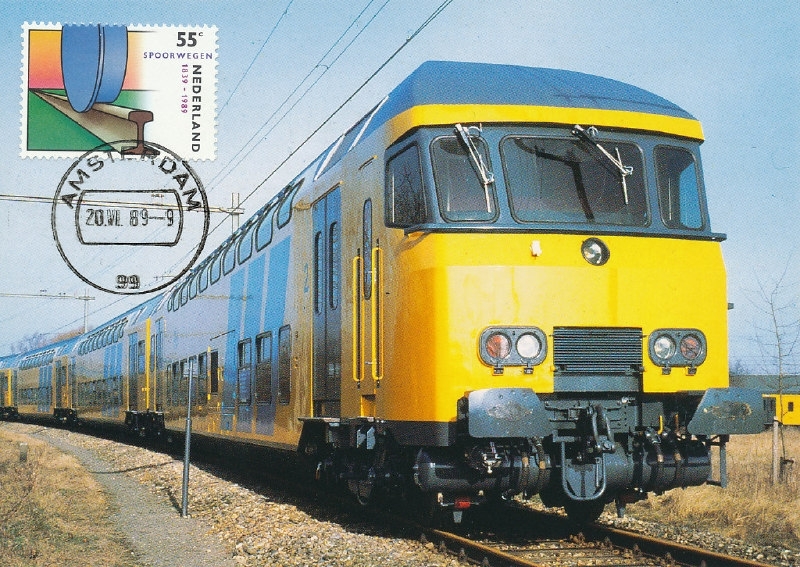 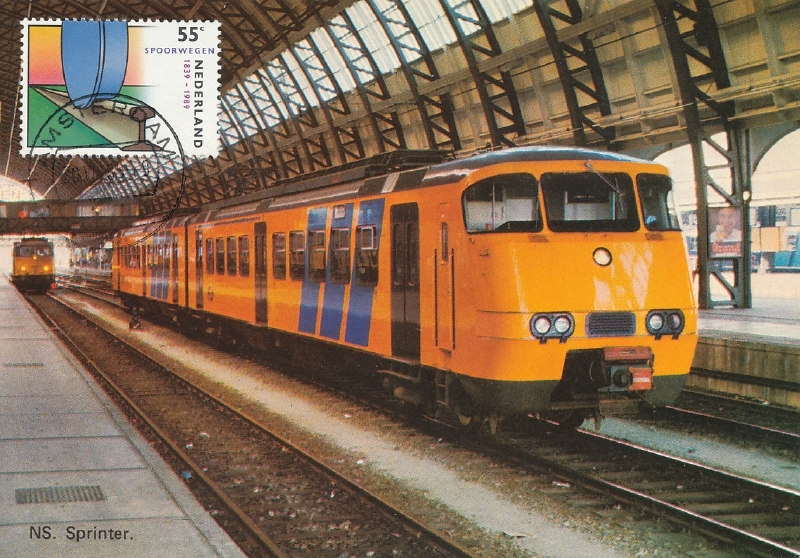       
On the occasion of 150 years of Dutch Railways, there was an emission of a series of three stamps. The first of which shows a railway wheel. |
    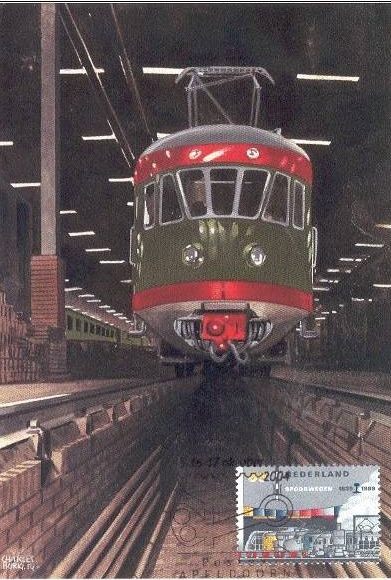 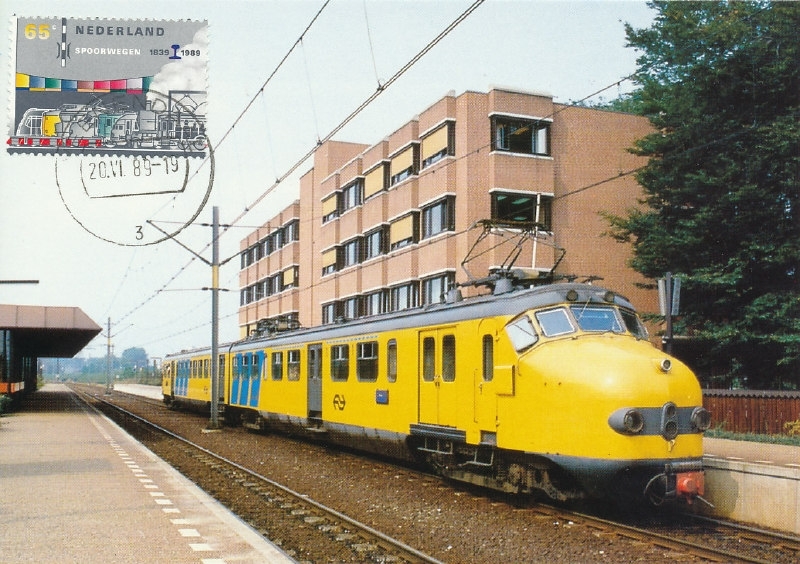 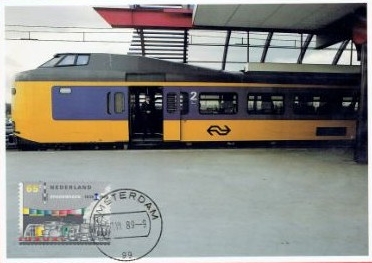  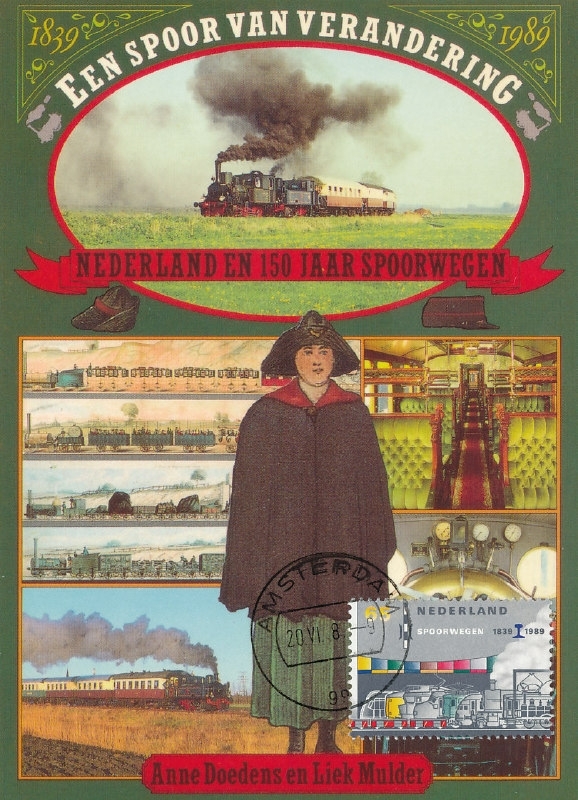     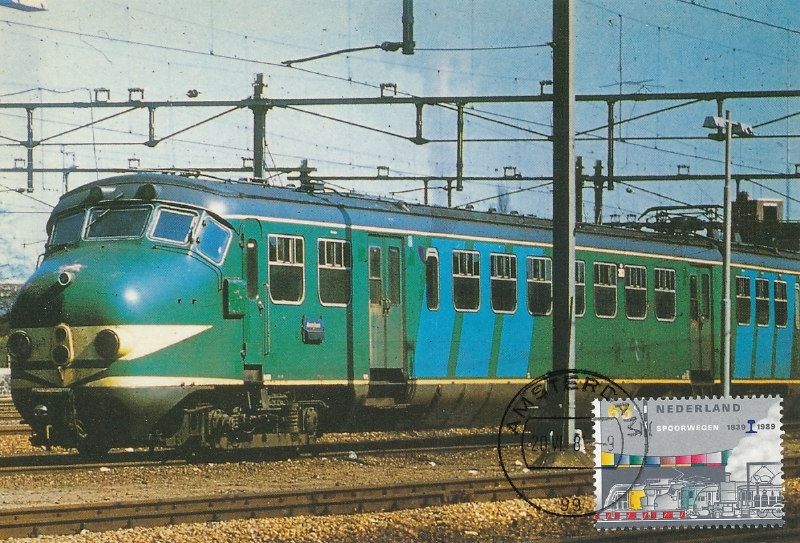       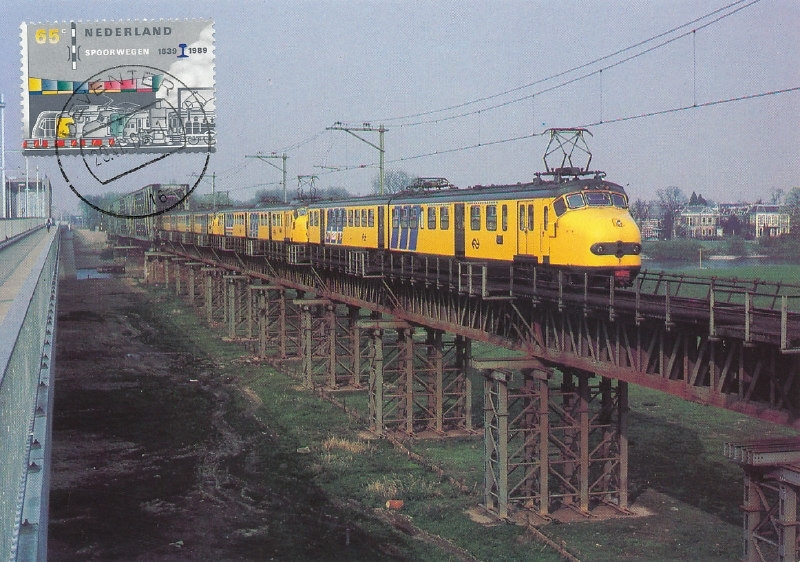 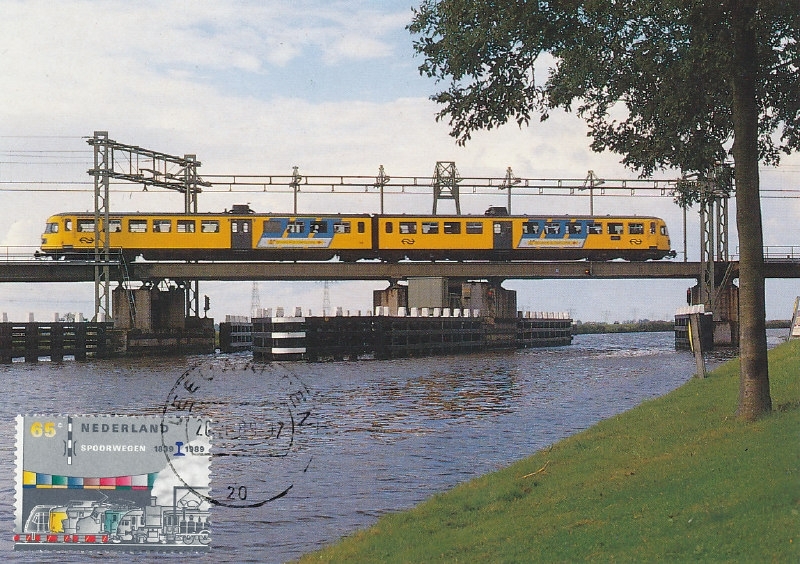   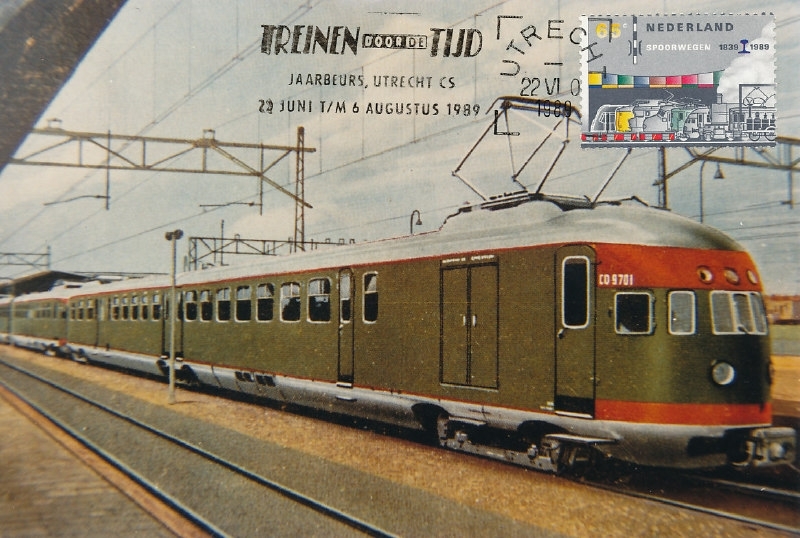    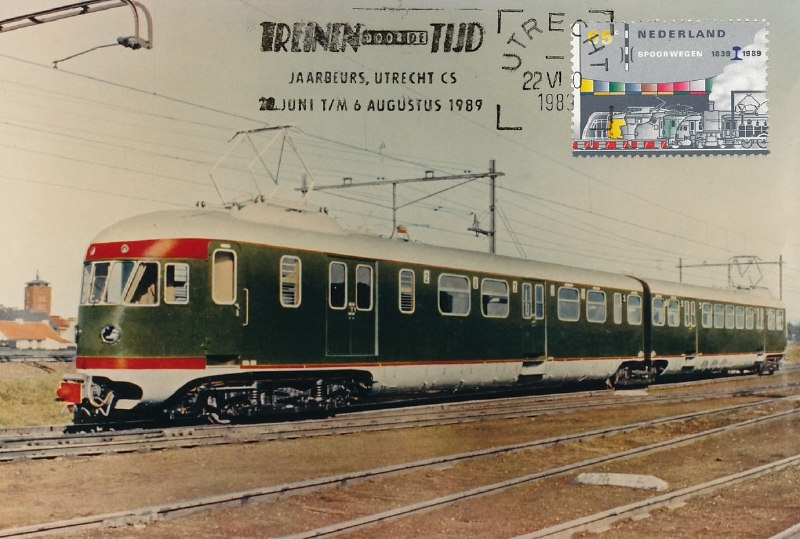  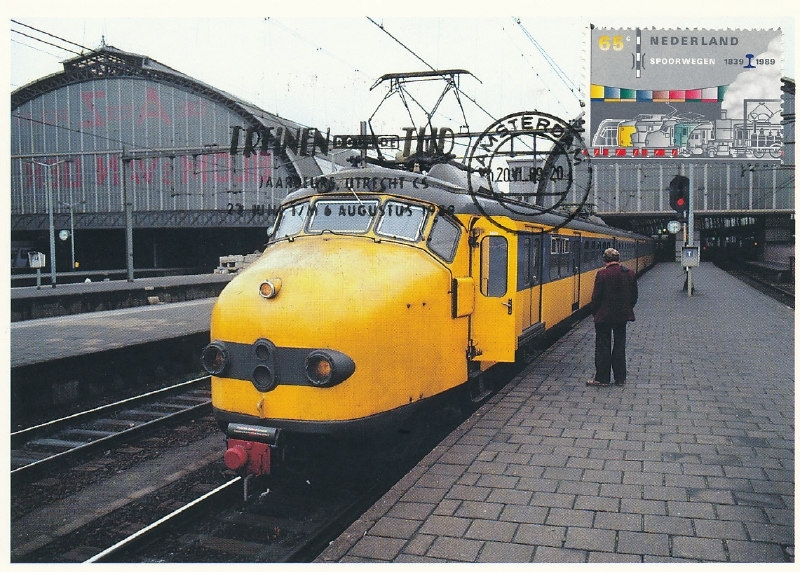 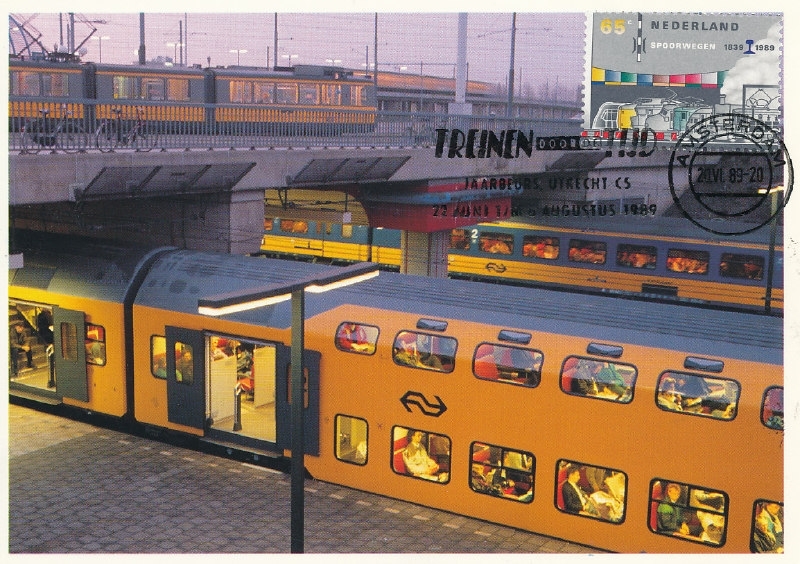    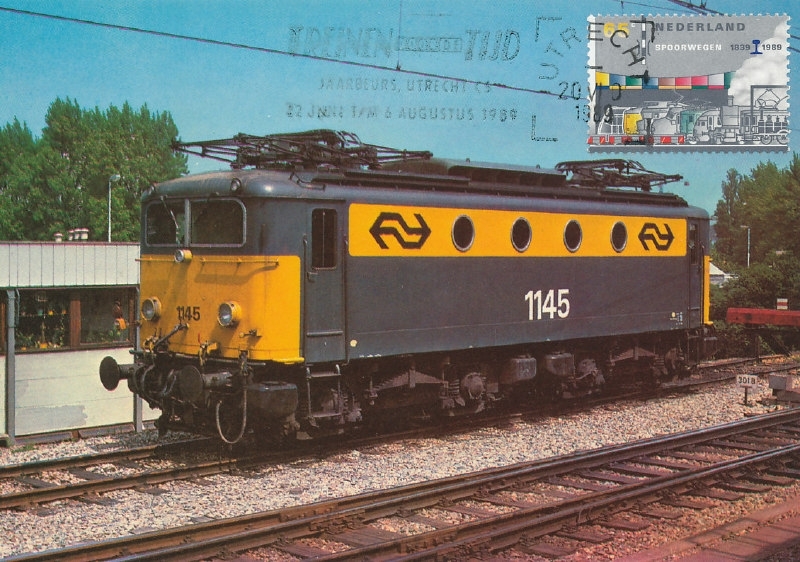  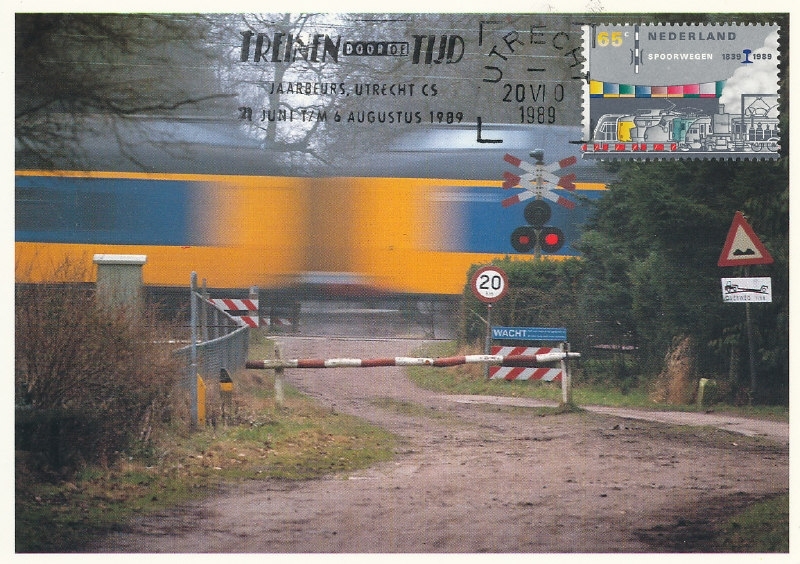 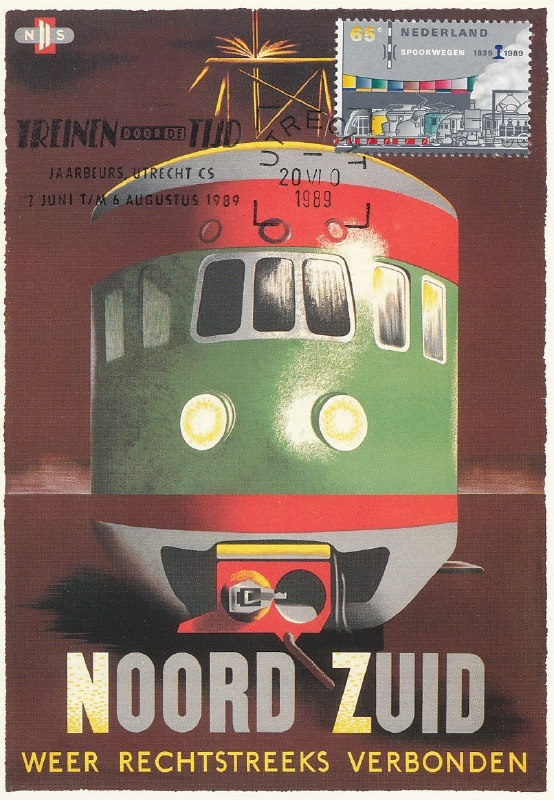     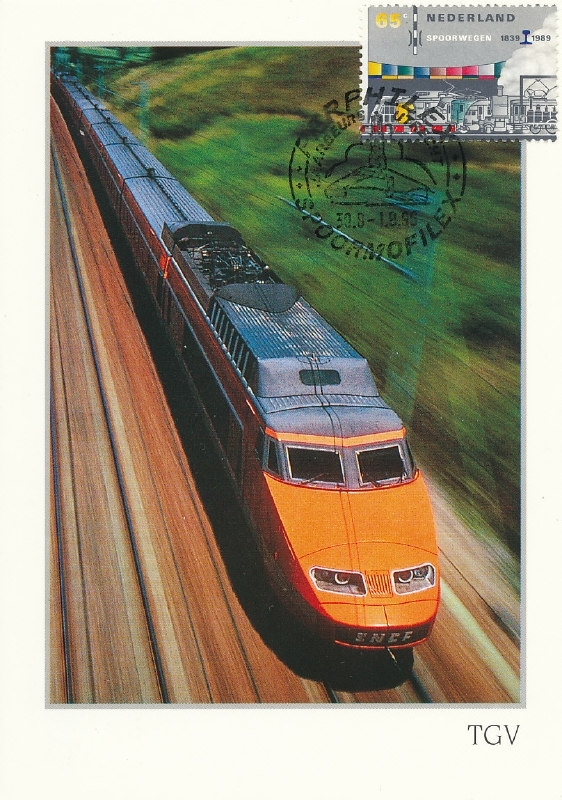  
The second shows a line-up of old and new railway equipment: steam engines, diesel engines and electric engines as well as EMU's. . |
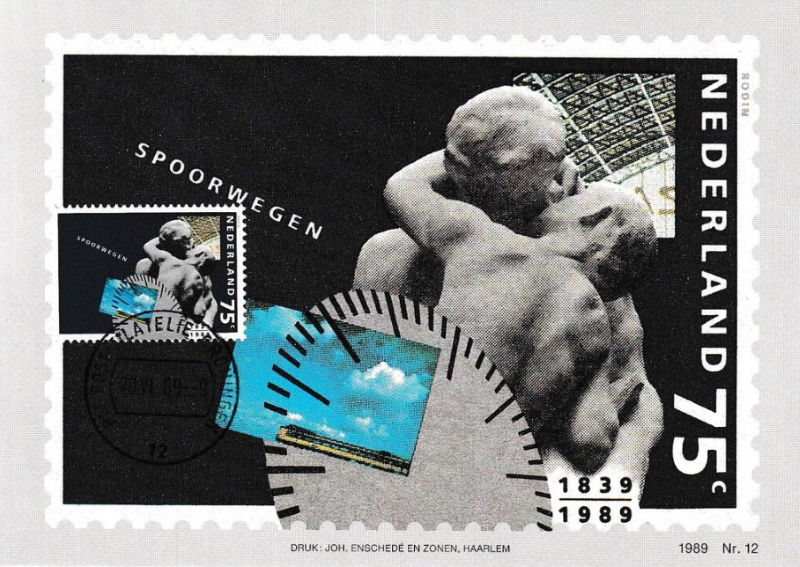        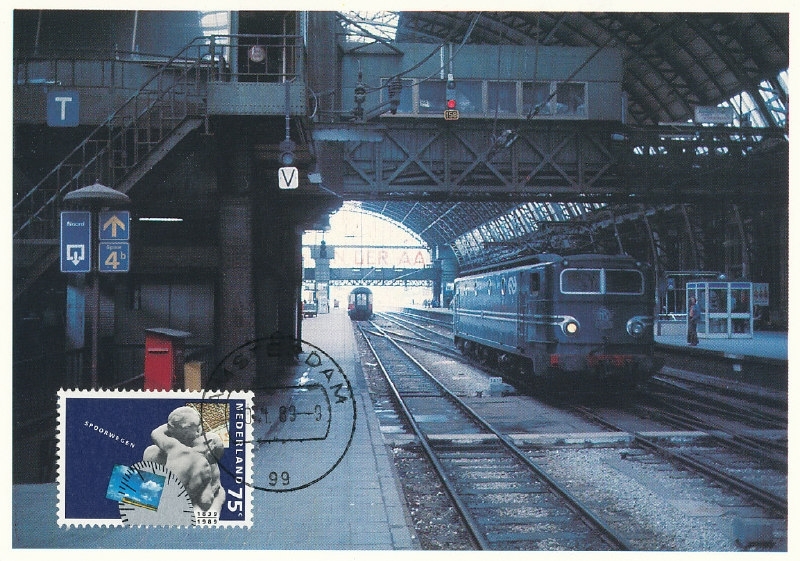 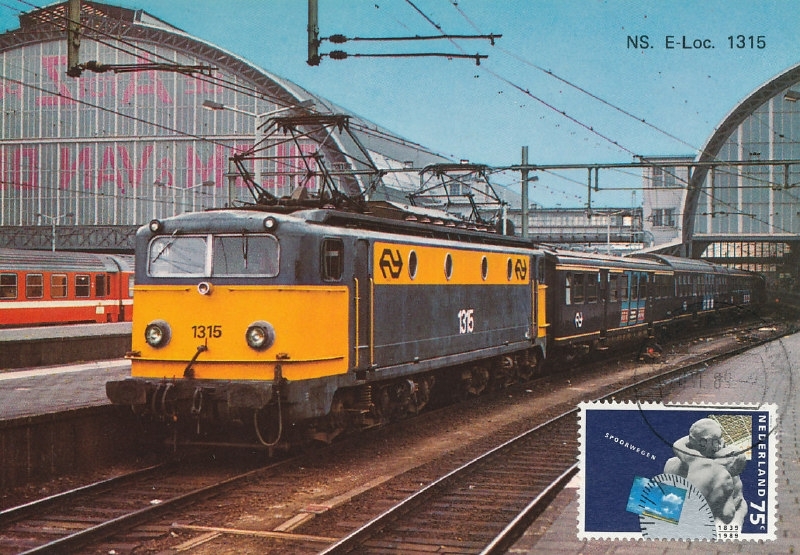 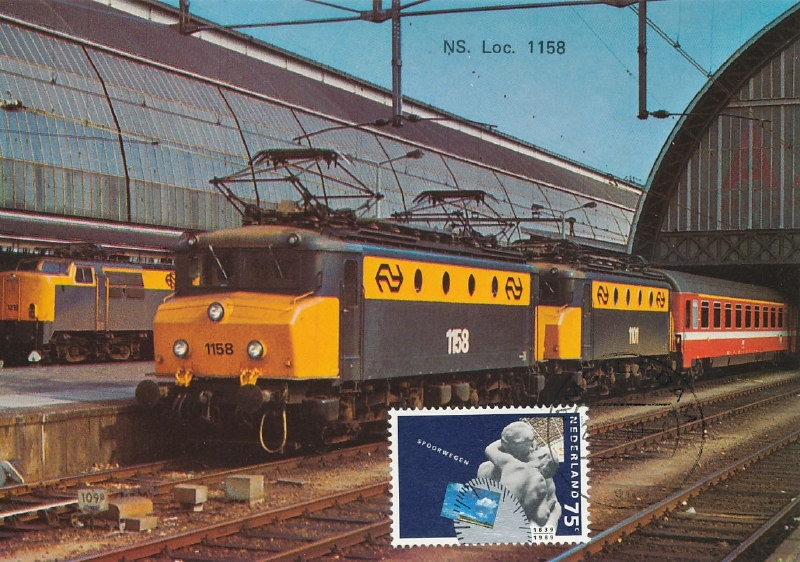 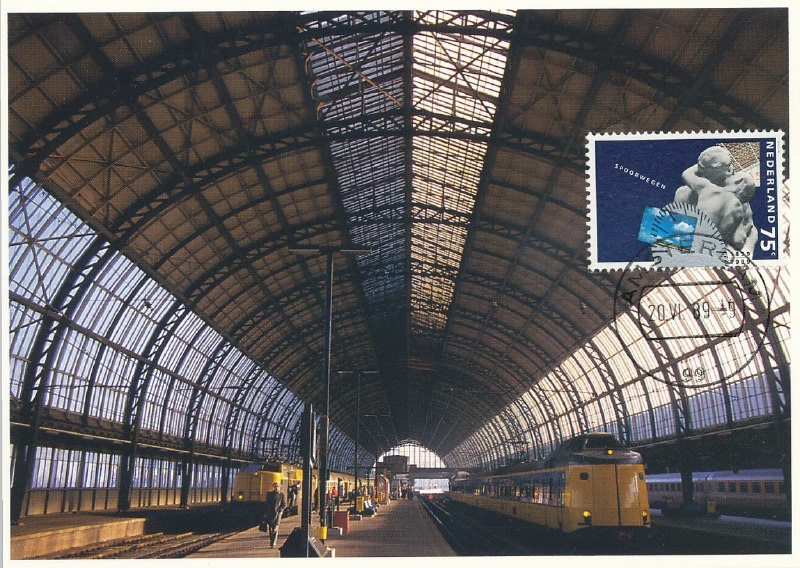      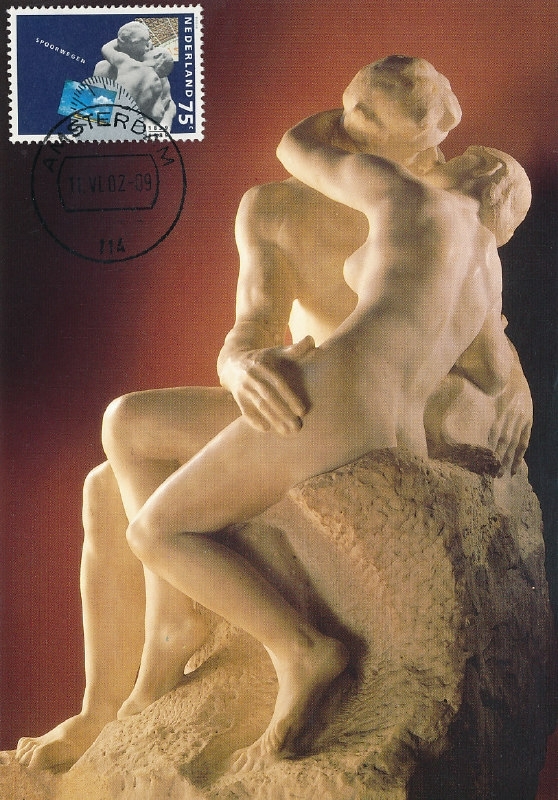      The third shows people taking leave, kissing each other under the station clock. Even the famous statue by Rodin is depicted. . Back to the top |
 Maximum card on the occasion of the celebration of the 150th anniversary of Dutch Railways. . Back to the top |
|
1992 |
|
1995 |
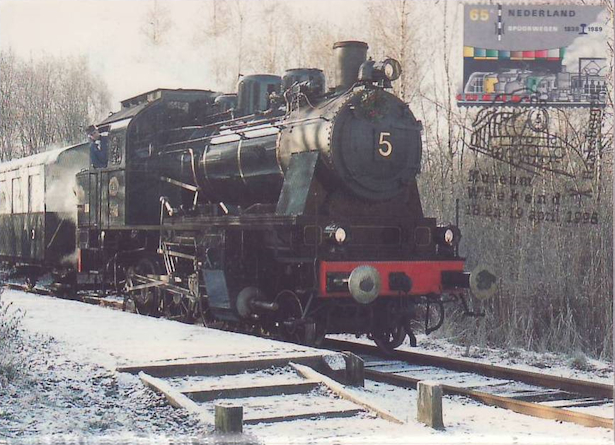 Museum Buurtspoorweg in Haaksbergen with a 1989 stamp. Back to the top |
|
1996 |
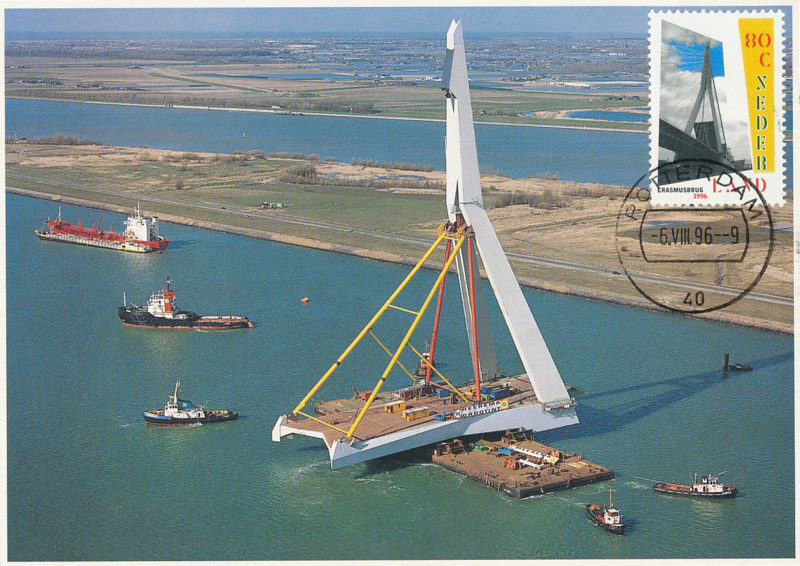 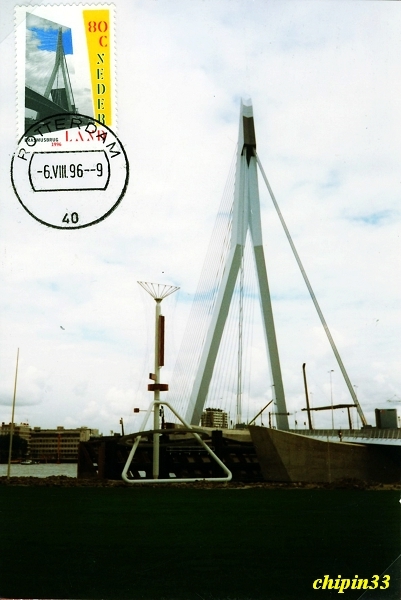   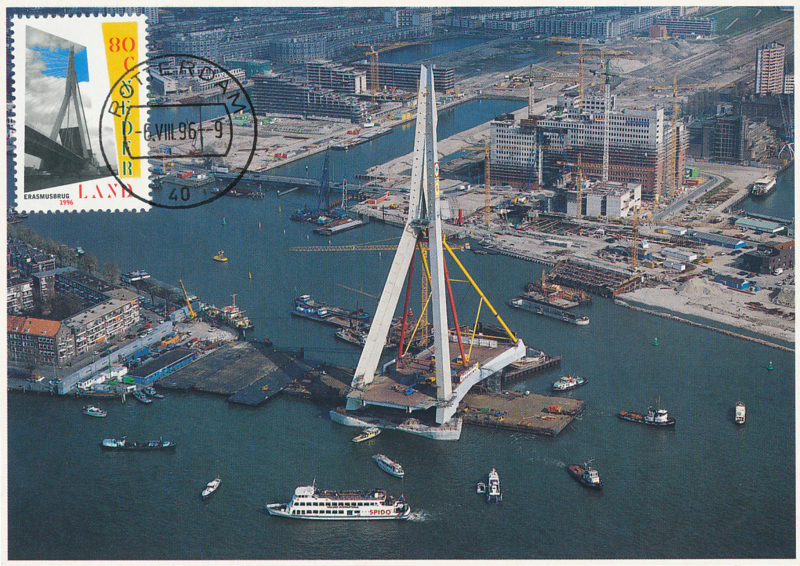    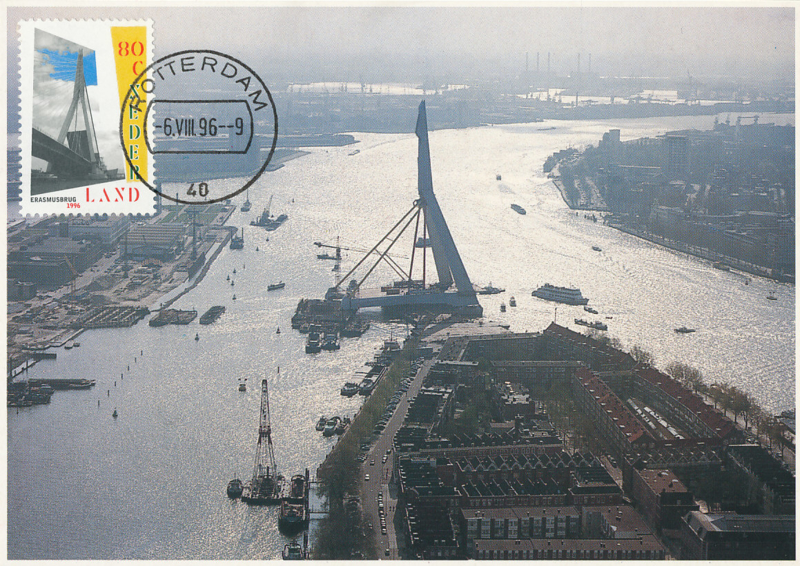  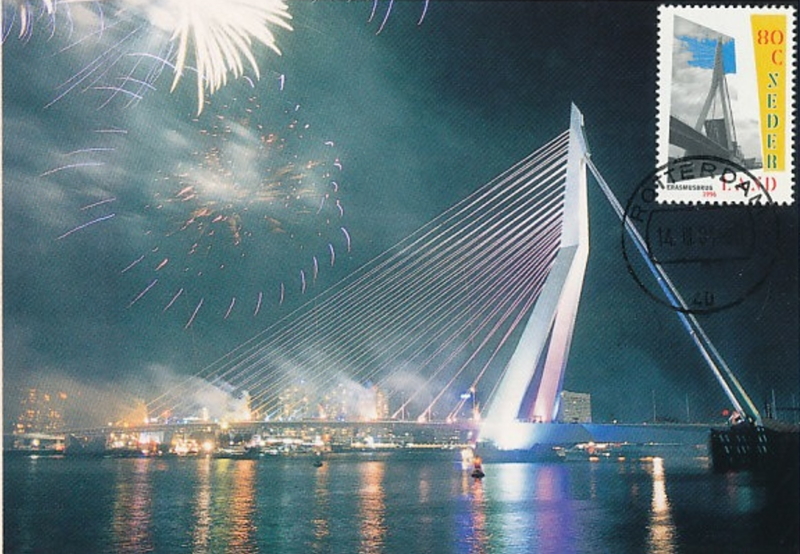    The Rotterdam Erasmus Bridge is incorporated because of the railway (tram / streetcar) lines running across it. The rails are part of the city's underground/tram system. Also see the 14-03-2001 issue of priority stamps with the same bridge. Maximum cards with chipin33 on them, come from this site: http://bridge-maximumcard.blogspot.nl/. Back to the top |
|
1997 |
 This is a maximum card from France showing Dutch Thalys. Back to the top |
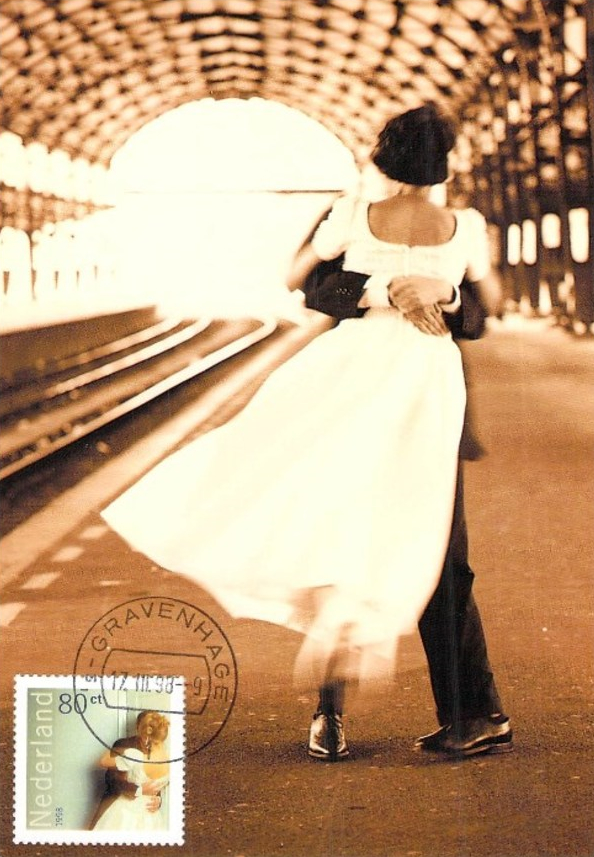 This maximum card shows The Hague Central station. Back to the top |
|
1998 |
|
1999 |
 Maximum card from Belgium with Dutch Thalys. Back to the top |
|
2001 |
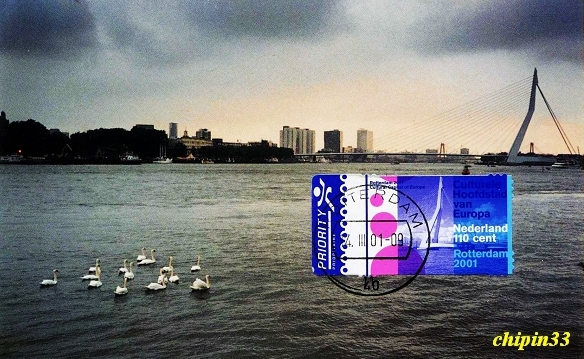 
The stamp shows Erasmus Bridge in Rotterdam. A bridge with tram tracks on it (part of the city's tram-underground system). The same bridge was also to be seen on a 1996 Dutch stamp. Maximum cards with chipin33 on them, come from this site: http://bridge-maximumcard.blogspot.nl/. Back to the top |
|
2004 |
 Card with personalized stamp showing Harry Potter's Hogwart's Express. The loco on the card hauls a goods train though. Back to the top |
|
2005 |
    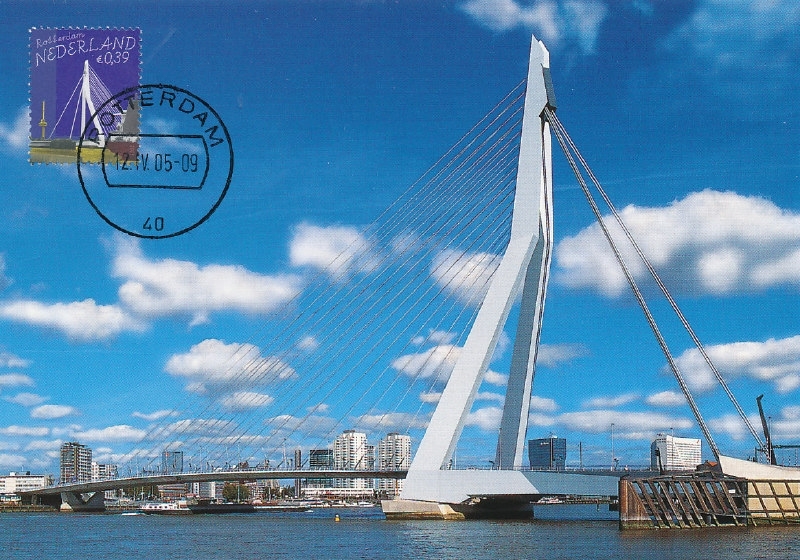    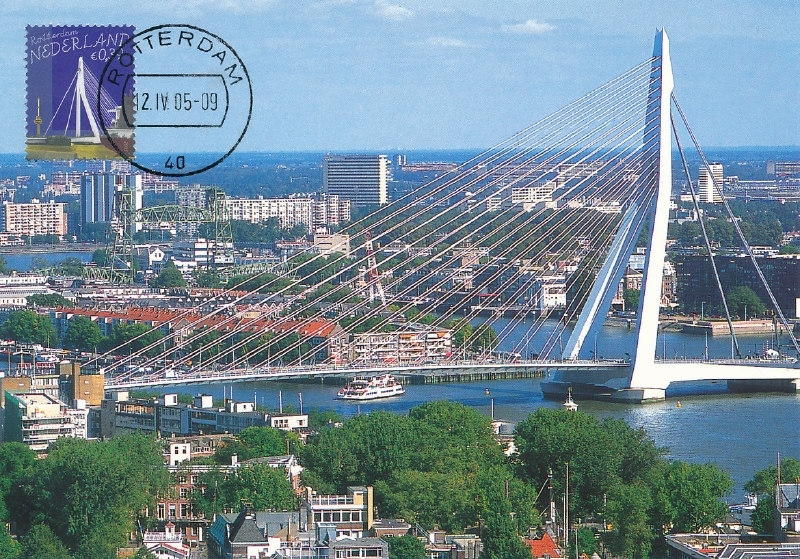 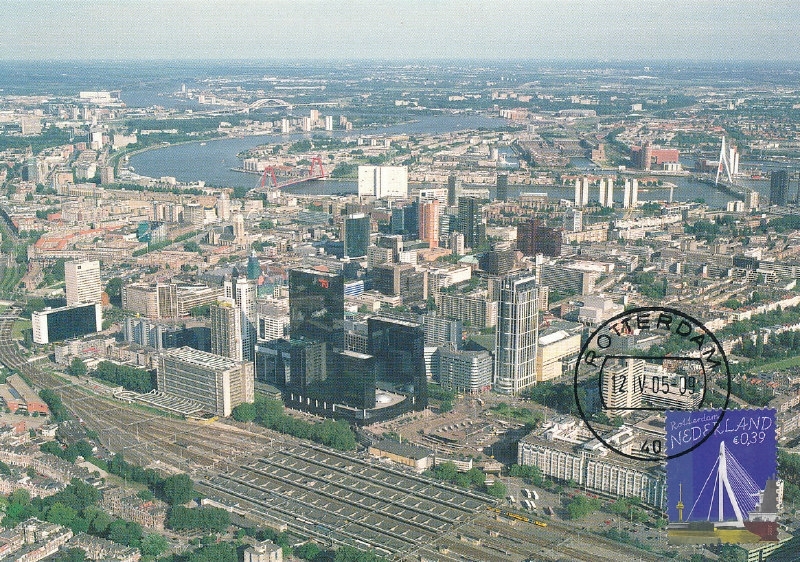 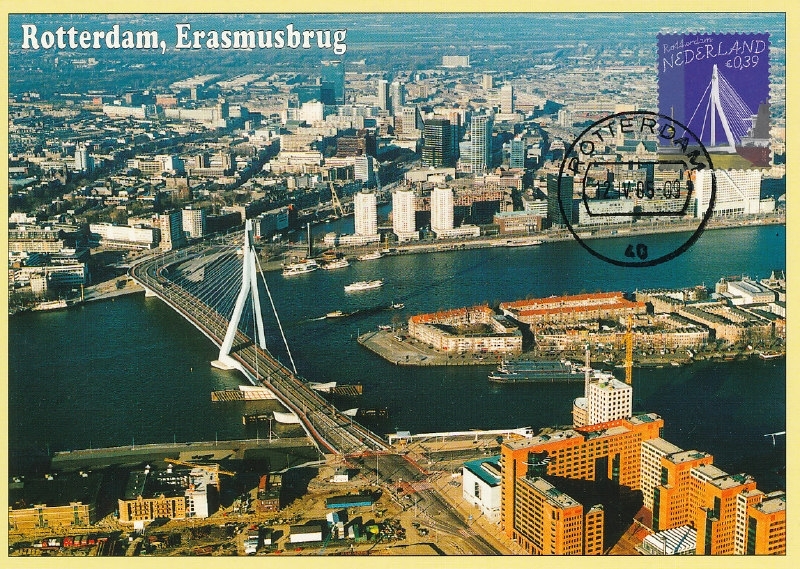  Again Erasmus Bridge in Rotterdam. A bridge with tram tracks on it (part of the city's tram-underground system). The same bridge was also to be seen on a 1996 Dutch stamp. |
 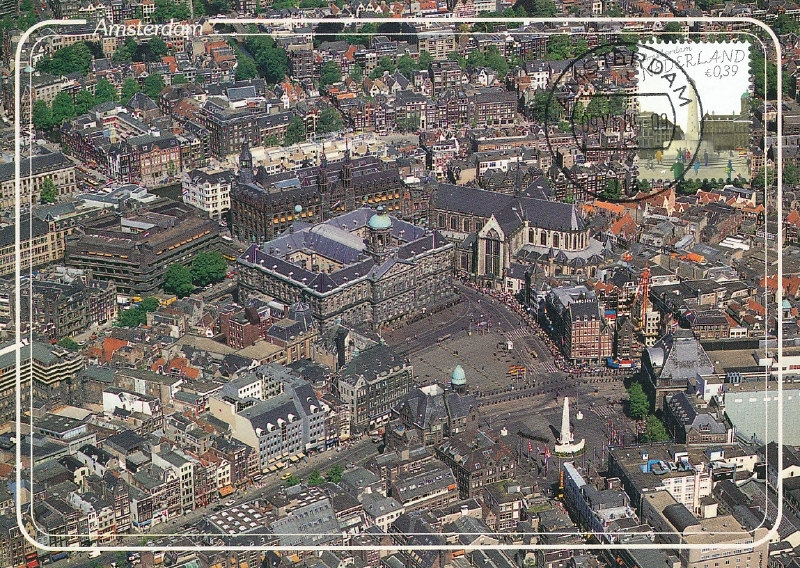 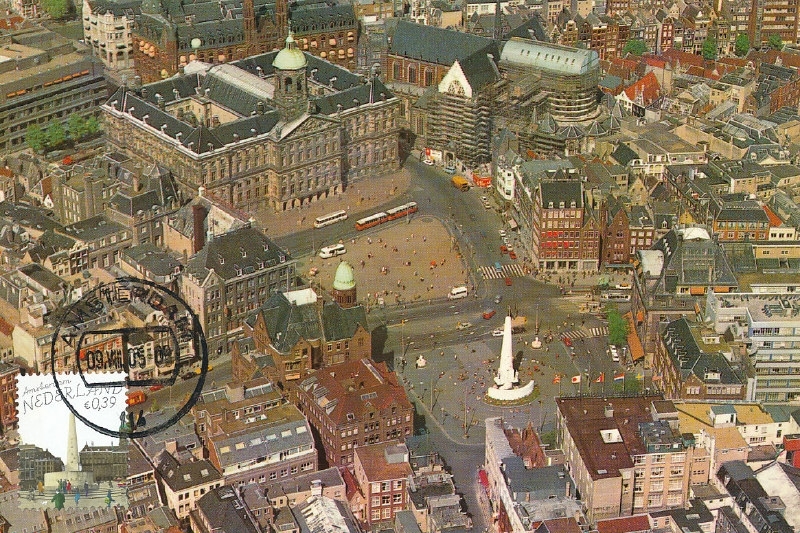   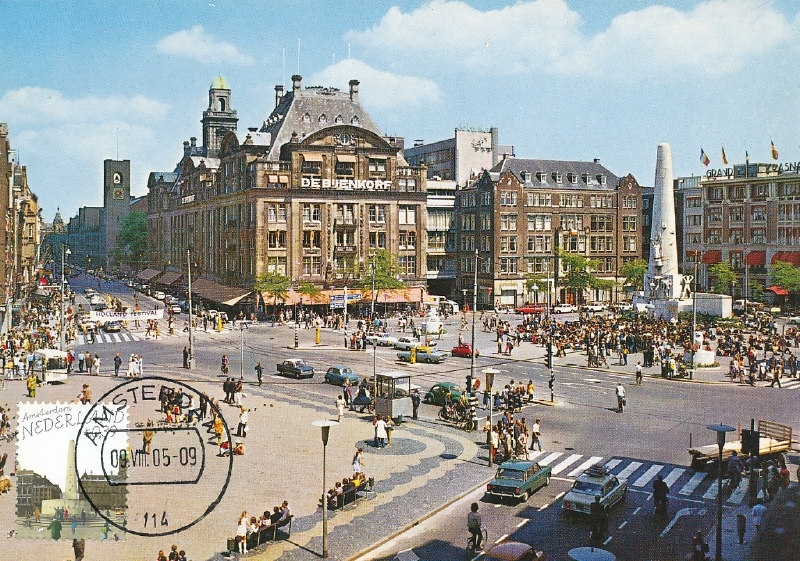   
Tram line 4 passes "De Dam", one of Amsterdam main squares. |
  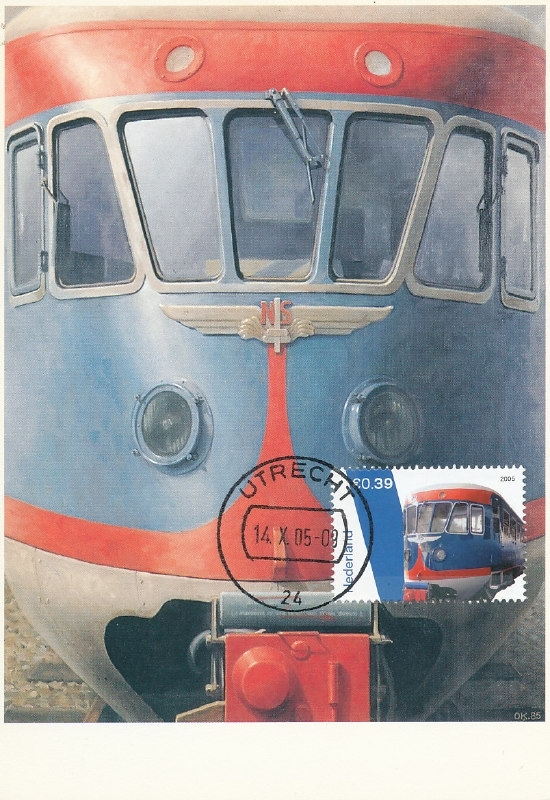 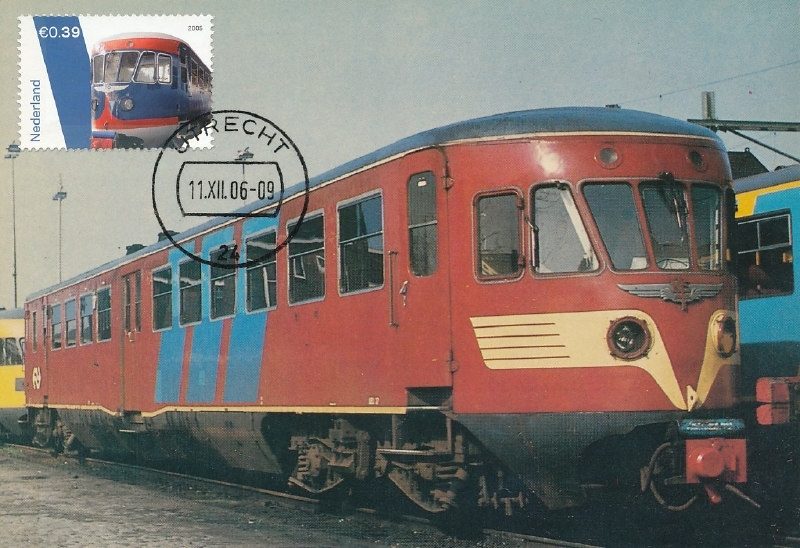  
The Blue Angel got its name from the famous movie "Der Blaue Engel" from 1929 featuring Marlène Dietrich. This train is now to be seen in the Utrecht railway museum. Its official name is DE 41 and it was introduced in 1953. It could contain 73 passengers. The lower card is a picture taken from Catawiki's Last Dodo site. |
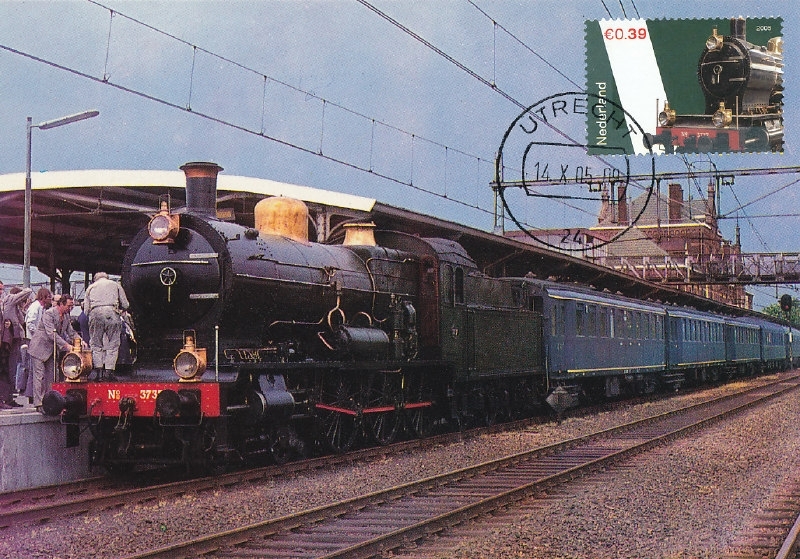    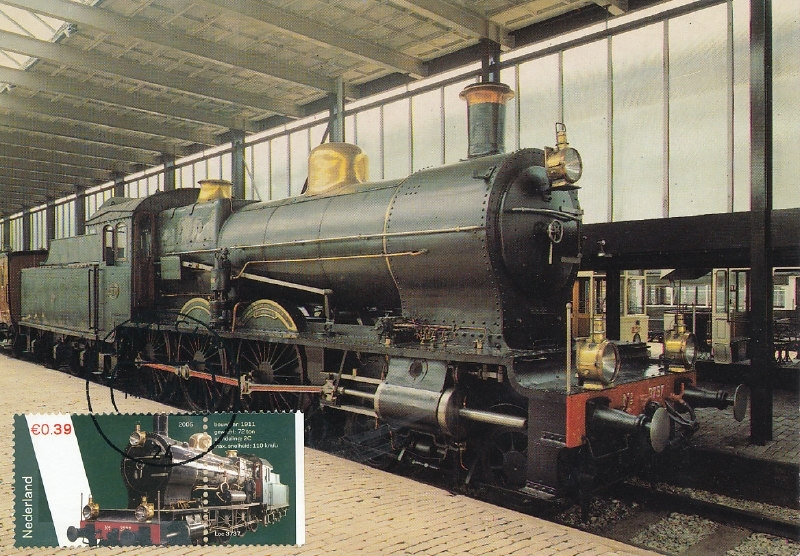 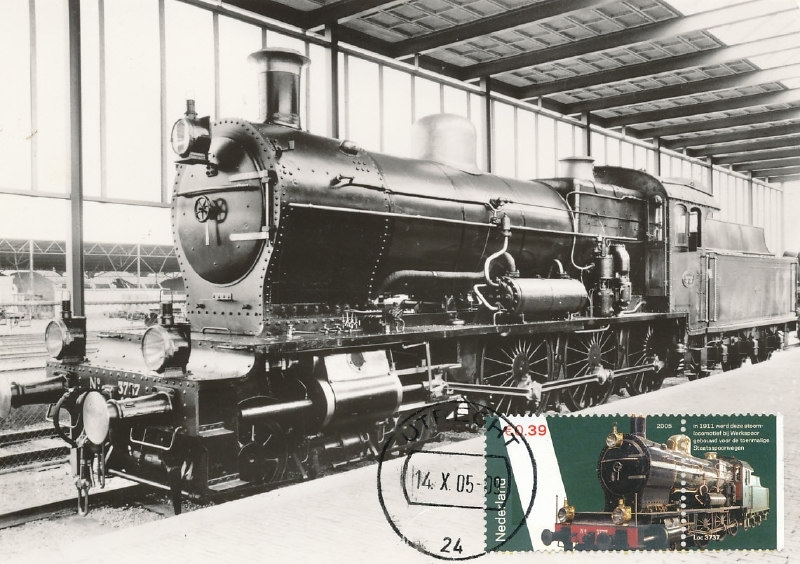 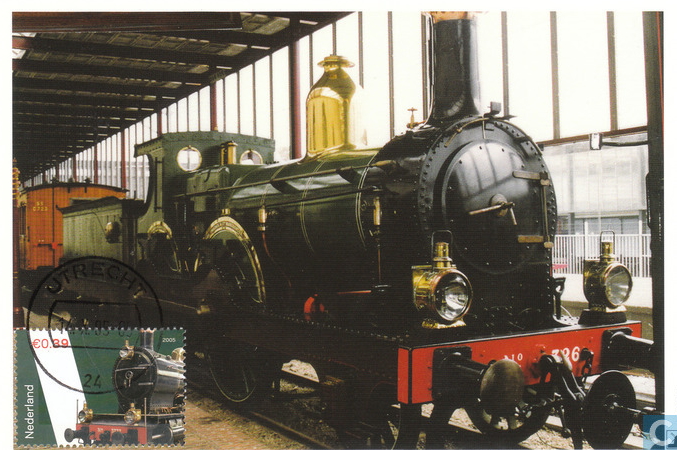
Steam locomotive 3737 ran services till 1957. One still survives and is operational. It sometimes carries out special rides. The lower card is a picture taken from Catawiki's Last Dodo site. |
   
The Intercity Express train is a German ICE train which can reach speeds up to 330 kilometers per hour on special high speed track, not available in Holland at the moment these stamps were issued. The lower card is a picture taken from Catawiki's Last Dodo site. |
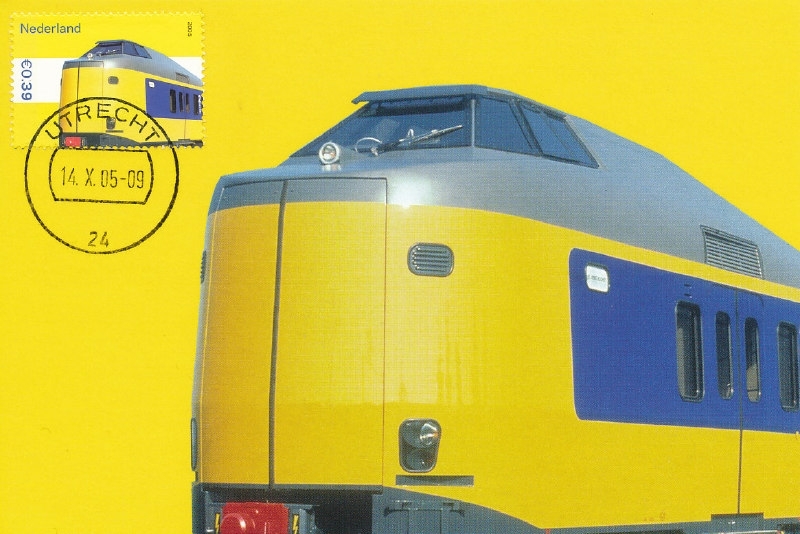 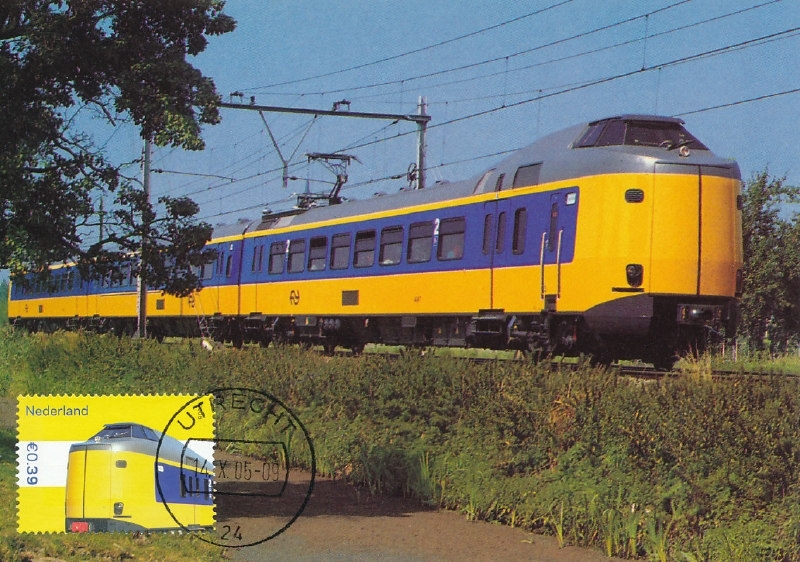    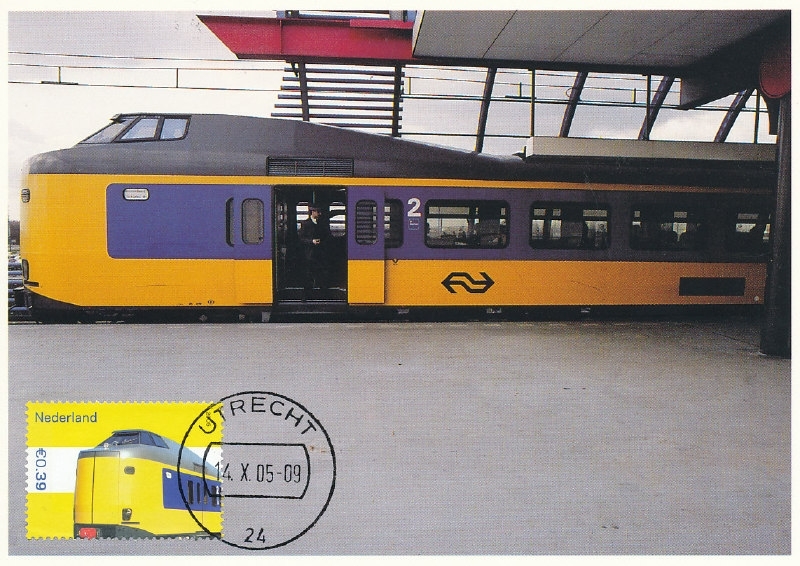  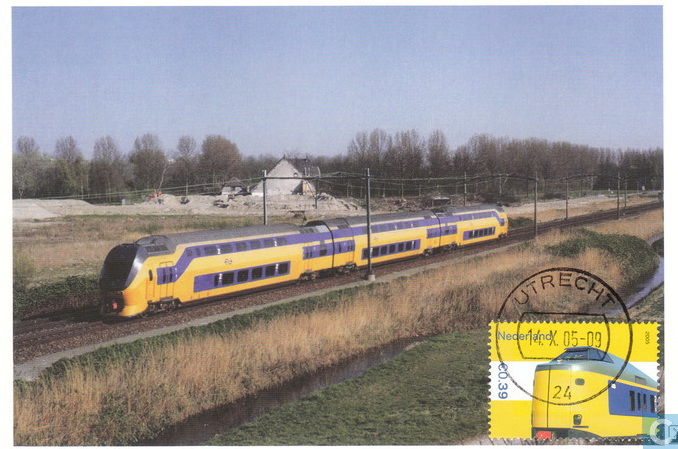
The Front Runner (Koploper) is in use since 1977. The train driver is high above the passenger compartment, which makes it possible to couple carriages without obstructing the way through to the next carriage. It was also the first train in which benches were not only placed opposite each other but behind each other as well. The lower card is a picture taken from Catawiki's Last Dodo site. Back to the top |
|
2006 |
 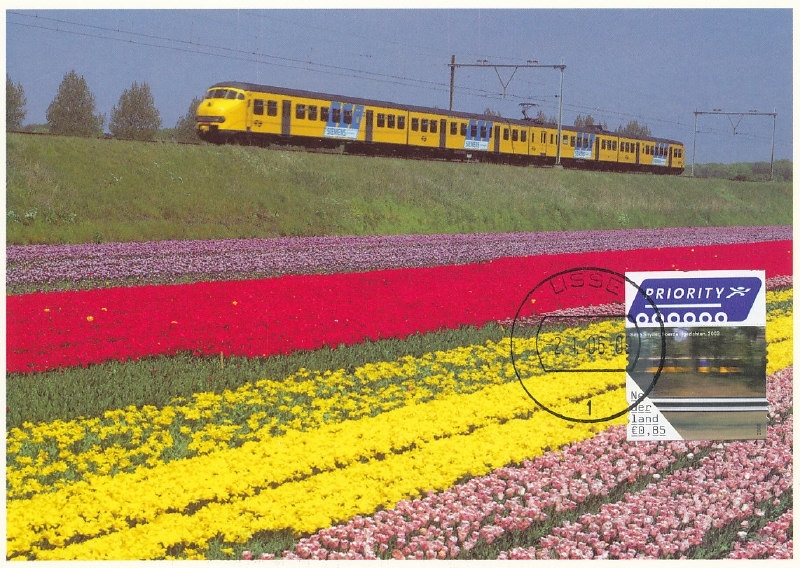
A series of 5 stamps for delivery outside Europe shows Dutch cultural heritage. One of them shows a train rushing past. It is a work of art made in 2003 by a young American artist named Sean Snyder. It is called "Boerderijgezichten": farm views. The stamp shows the infrastructure of motorways and railways which provide mobility for the always busy Dutchmen. |
   Canadian artist Jeff Wall's artwork "Lost Luggage Depot" in Rotterdam. |
|
2008 |
 Cancel for Youth philately 2008; stamp of 2005. Back to the top |
|
2009 |
 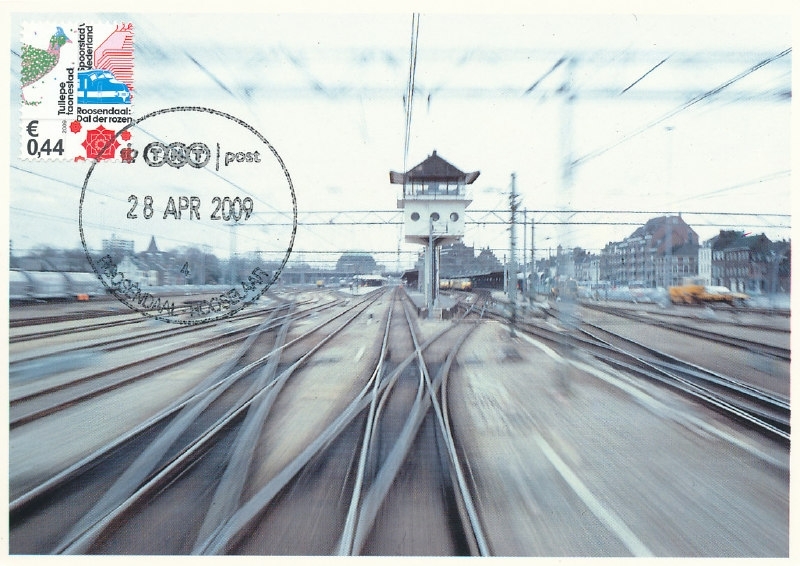    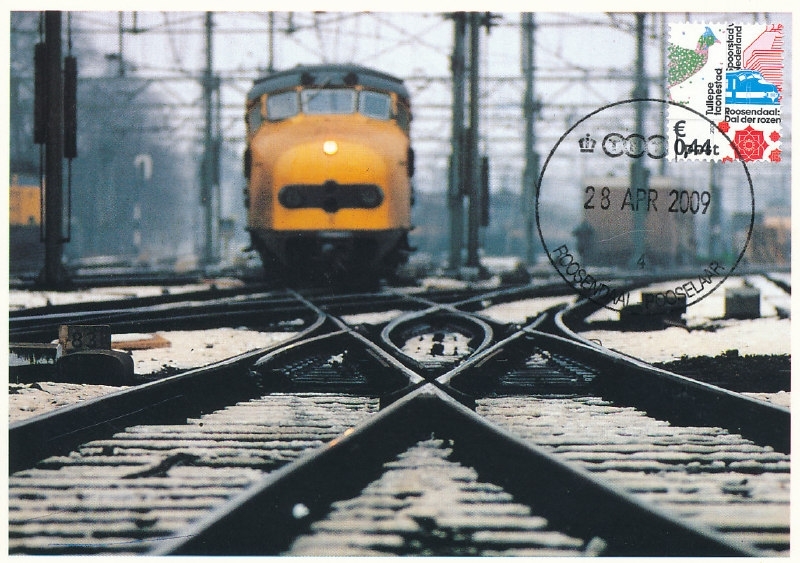 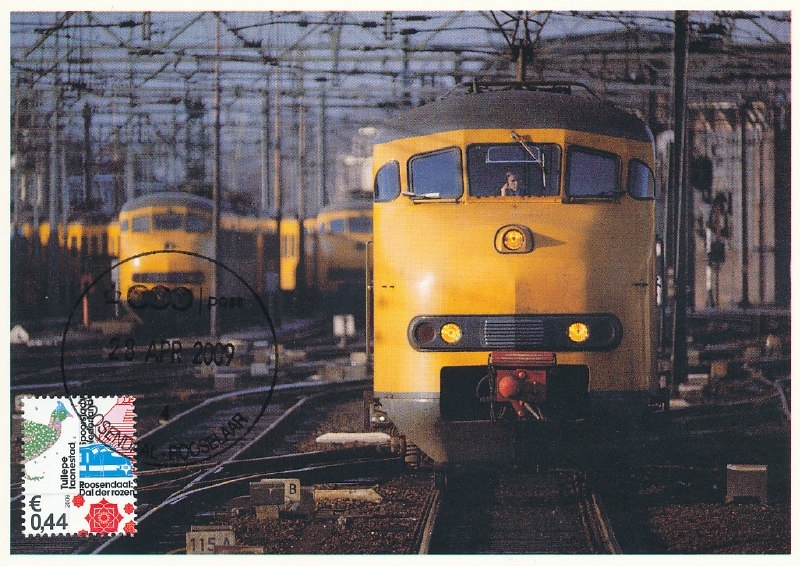 
Roosendaal is an important junction of railway lines and the gateway to the countries south of The Netherlands.  Back to the top |
|
2010 |
  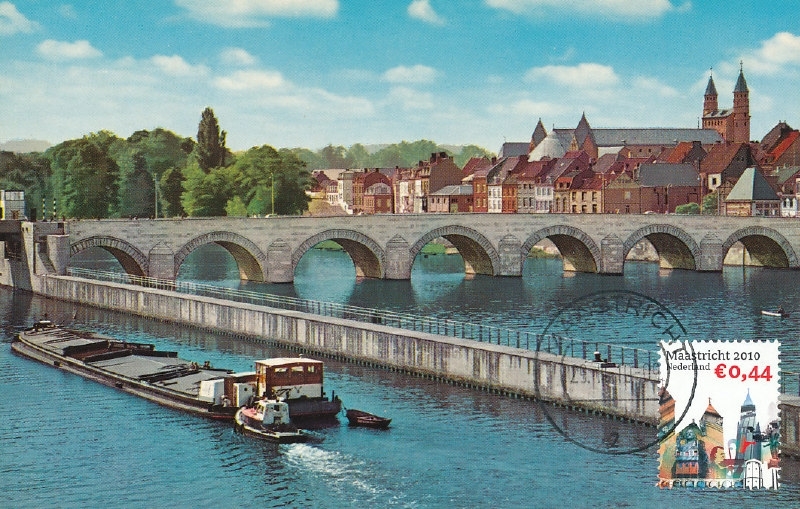      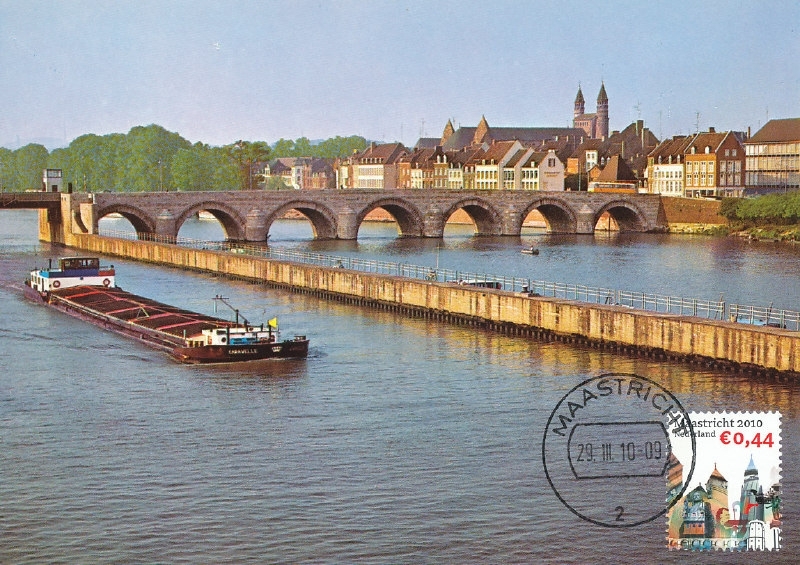 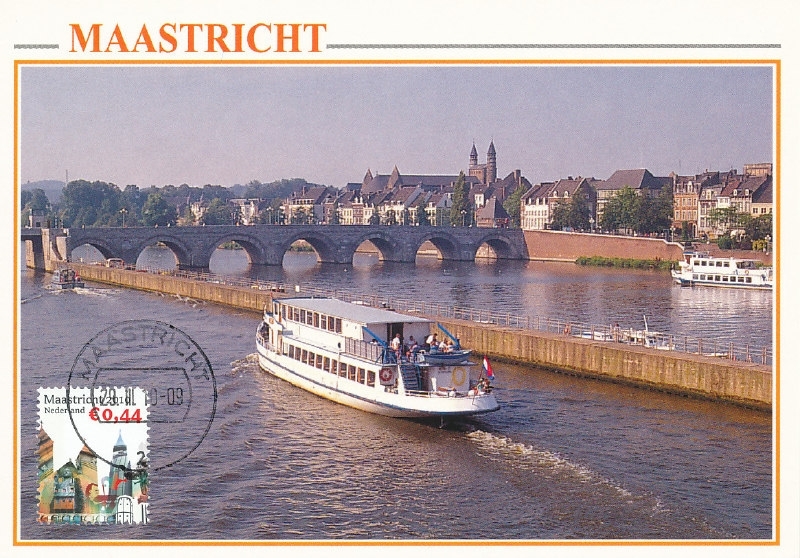 St.-Servaas bridge in Maastricht. This bridge carried a streetcar until 1914. The stamp originates from the Maastricht sheet of the "Mooi Nederland" (beautiful Netherlands) series. Back to the top |
|
2011 |

Dutch postal services went to the stock exchange. |
            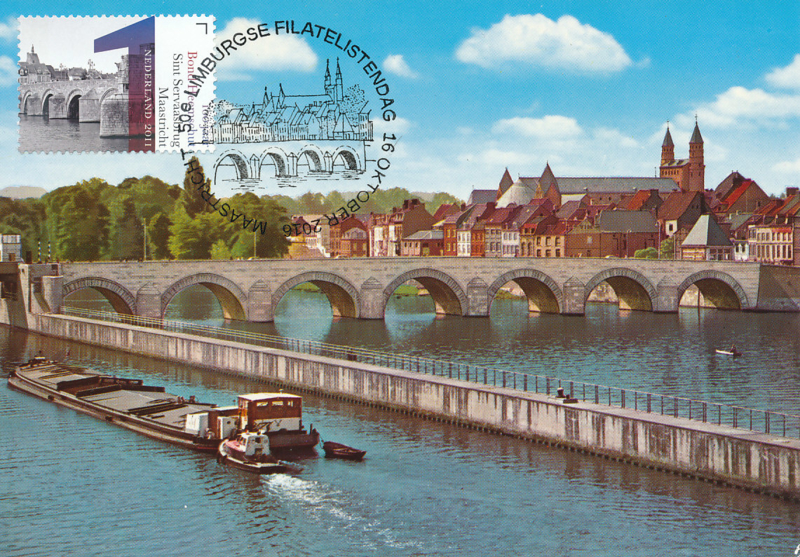     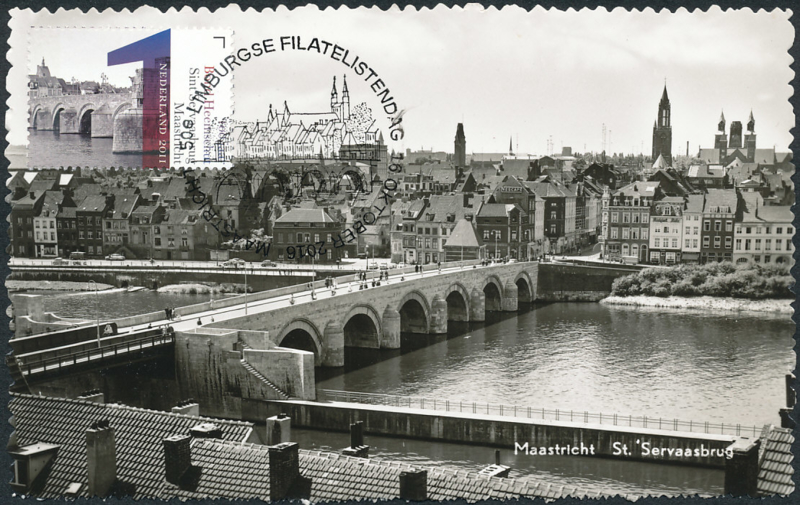 
St.-Servaas bridge in Maastricht in the fifth stamp. This bridge carried a streetcar until 1914. |
|
2012 |
 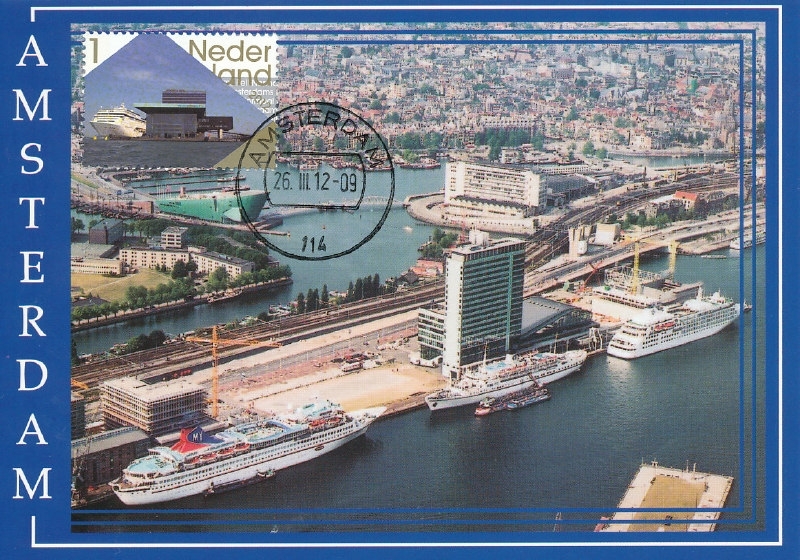
The Amsterdam passenger terminal is in the vicinity of Amsterdam Central Station. The railway lines can clearly be seen in these picture postcards with different cancellation stamps. |
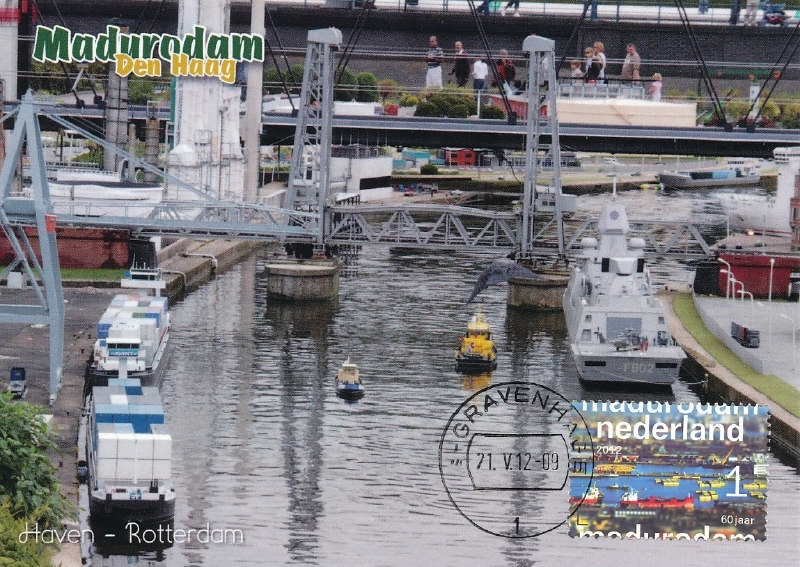 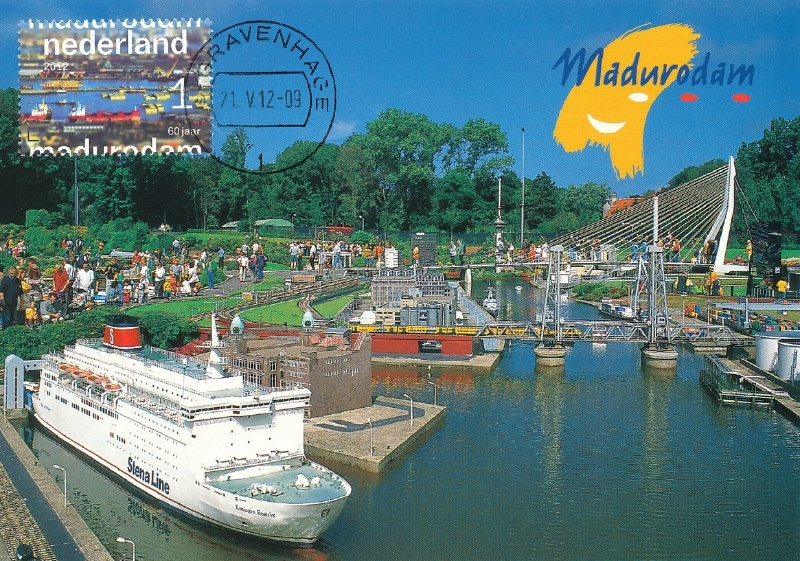 Two maximum cards of Madurodam, the miniature city in the Hague, with "De Hef", an inconic railway bridge near Rotterdam, which is no longer in use. |
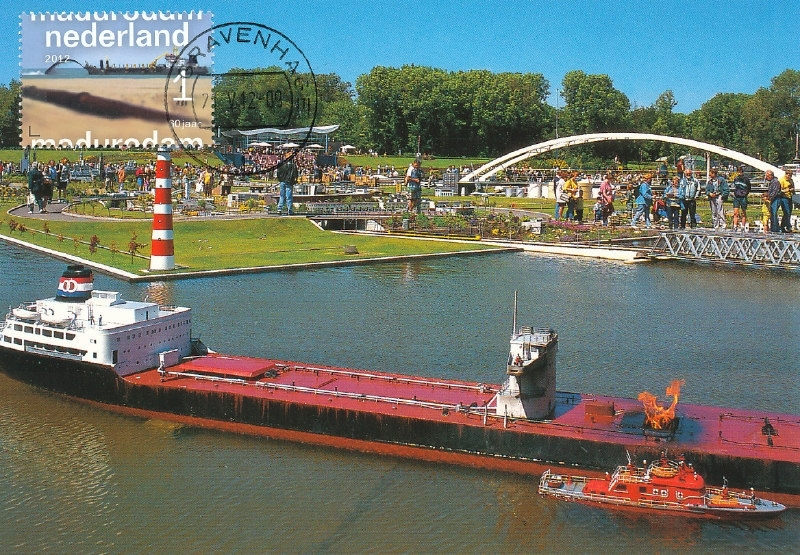 Another Madurodam scene, this time with another railway bridge near Rotterdam. |
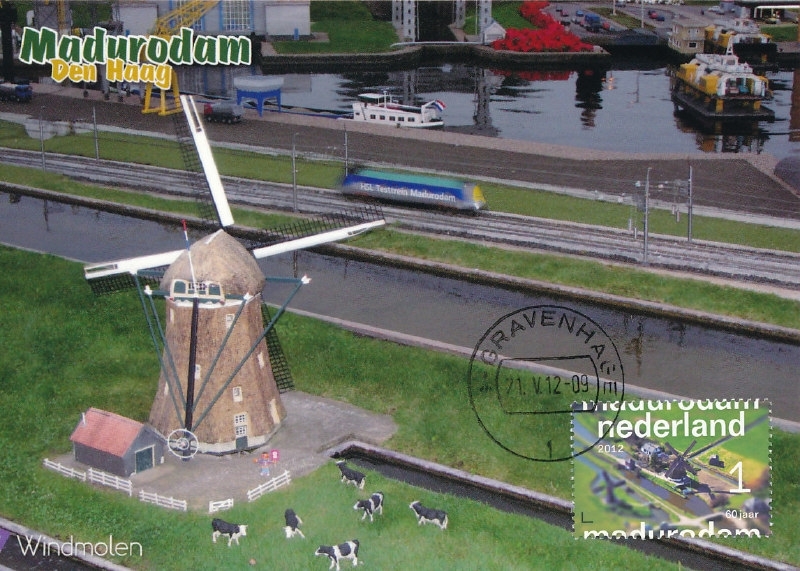 A lot of trains run through the miniature city of Madurodam. This maximum card shows a test train. |
|
2013 |

A highlight of Arcadis' achievements is Amsterdam Bijlmer ArenA railway station. 60,000 passengers get in and out at this station daily. They enjoy the abundant daylight in the open spaces between the four viaducts. The 29 metres high glass roof seems to float on steel columns. The woodclad roof parts provide this Arcadis designed "Bijlmer cathedral" with a warm atmosphere. |

Arcadis designed the ecoduct (ecological viaduct) at Zanderij Crailoo near Hilversum. The ecoduct measures 800 metres and is one of the longest in its kind. It spans four obstacles, among which a very busy provincial throughroad and a railway line. This bridge connects two natural areas and it restored the ecological connection between them. |
|
2014 |
 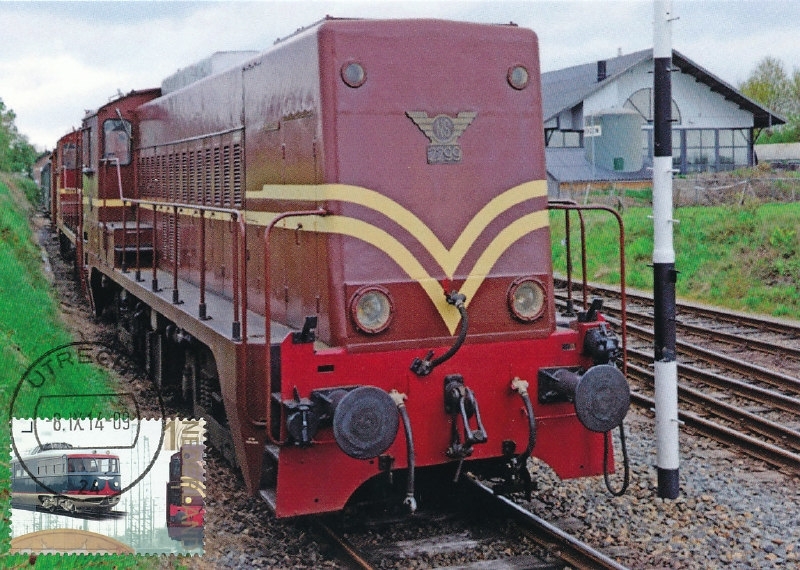
Rail inspection vehicle NS 20, a diesel electric loco called The Camel, from 1954. |
  Standard railway station clock. |

Compilation of 175 years of Dutch railways with two stamps. |
  
Haarlem Station: the first class waitingroom plaque (this plaque was also used for railway letter stamps). |
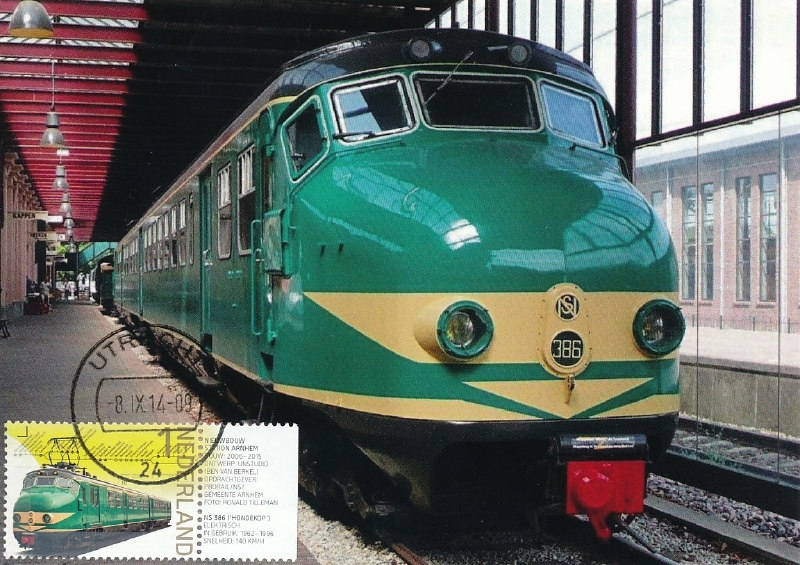  
NS 386, an electric passenger train nicknamed Dog's Head, used from 1962-1996. |
  
The Rotterdam "Hef" bridge. |
   
Amsterdam Station Flying Wheel logo, designed by the architect P.J.H. Cuijpers, used from 1889 to 1930. It also shows a railway ticket. From this year onwards railway tickets are no longer in use. The words Tiener Toer refer to a special ticket for teenagers available during the holiday season. It was valid for several days. |
  
ICM intercity train, used since 1977 and a stop and go railway signal. |
    
Railway clock from Rotterdam Central station and the new Rotterdam Station building. |
 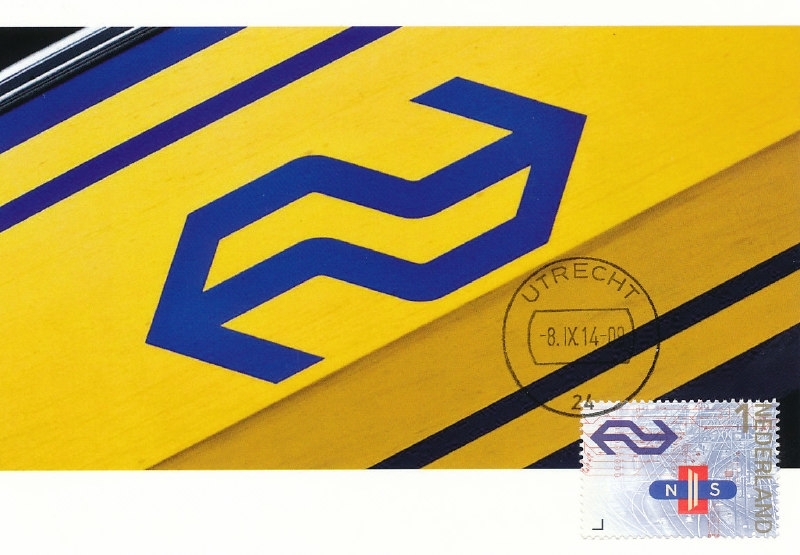  
The old and new NS logos. The logo below was used from 1946 to 1968. The "fishhook"logo was designed by Dumbar and Van Raalte and is in use from 1968 onwards. |
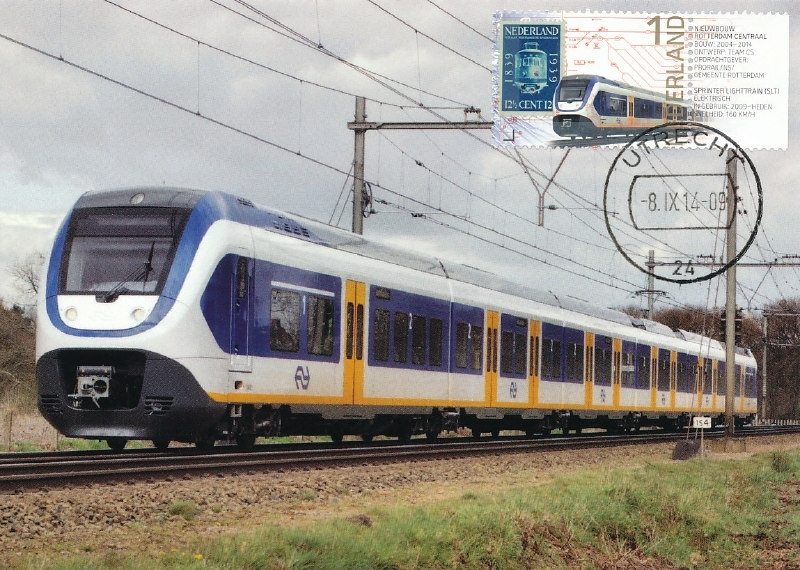  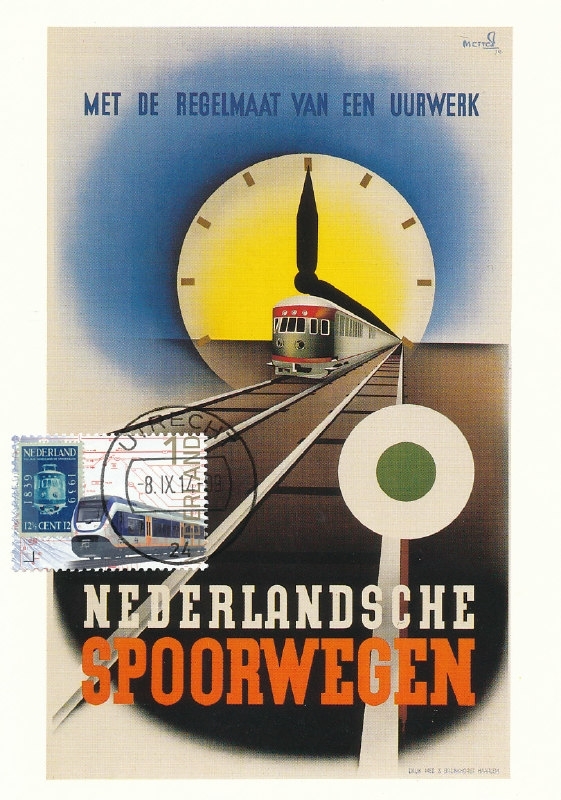  
The 1939 stamp issued on the occasion of 100 years Dutch railways and an SLT, Sprinter Light Train, used since 2009. Back to the top |
    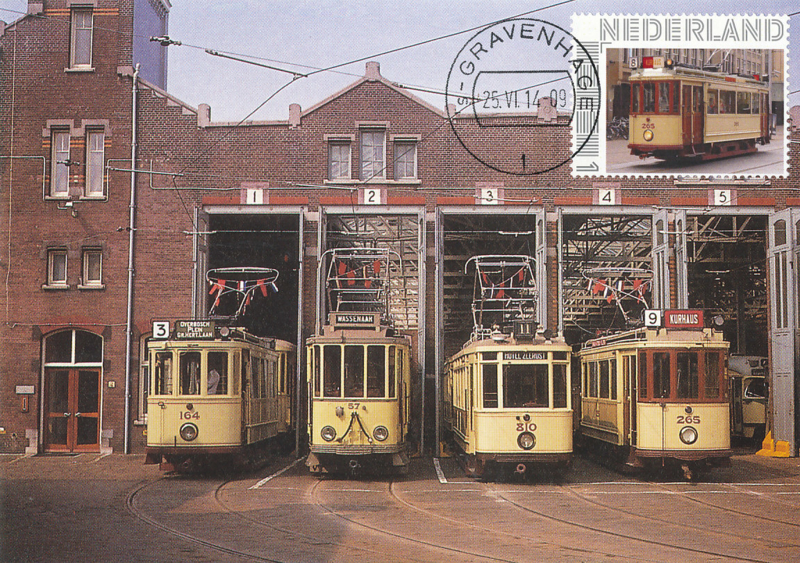        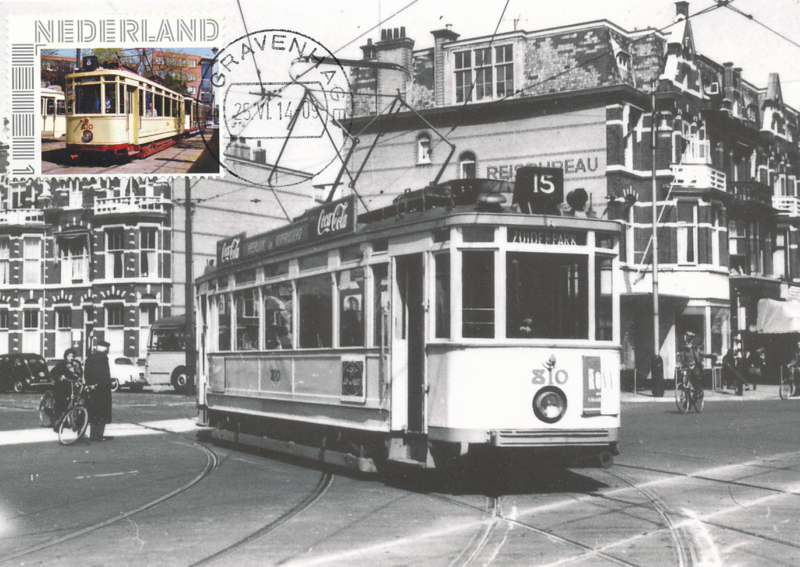 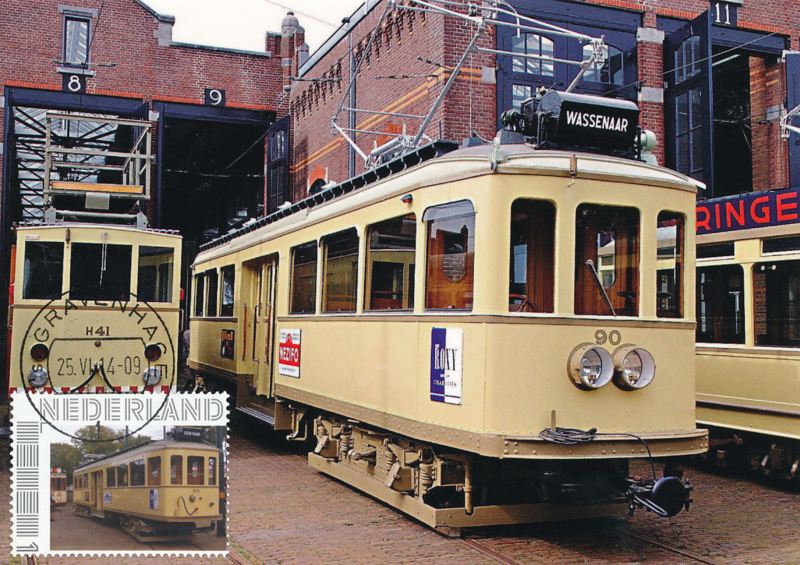        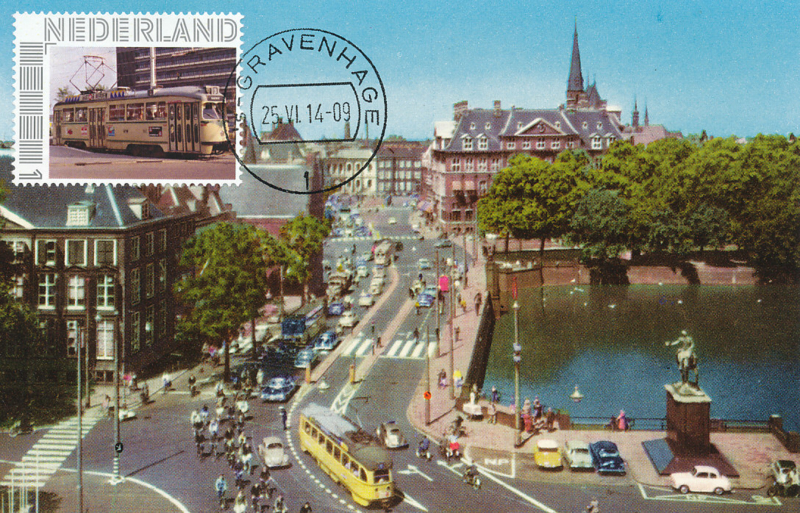  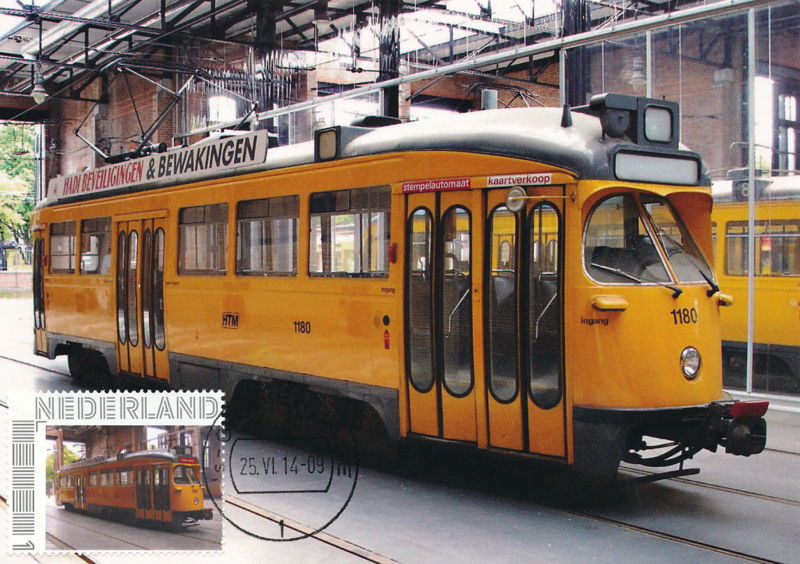   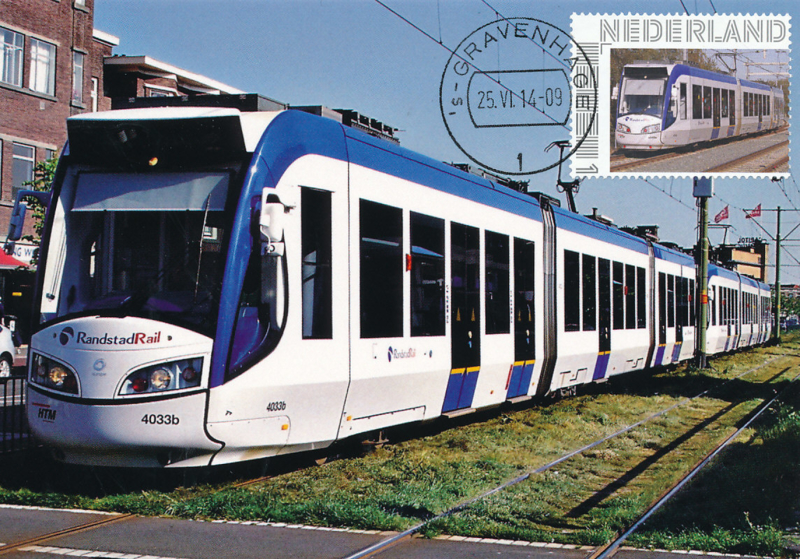 The personalized stamps on the cards above are issued on the ocasion of the 150th anniversary of HTM (Haagsche Tramweg-Maatschappij)in The Hague. Back to the top |
|
2015 |
 
There are two Moerdijk railway bridge beside each other. The one conspicuously in the foreground is the so-called HSL-bridge (HSL hogesnelheidslijn = HST high speed train). The one in the background is the old Moerdijk railway bridge. The three Moerdijkbridges connect the island of Dordrecht in the province of South-Holland with the province of North-Brabant across the Hollandsch Diep waterway. From west to east thre are a road bridge, the two-rail HSL-South bridge, and a two-rail bridge for the line Dordrecht - Lage Zwaluwe. The old railway bridge, which is still in use, was built at the end of the 19th century and was opened in January 1871. In the fifties of the 20th century it was replaced by a newer, wider, version. The conctruction of the HSL-South line made it necessary to build a third Moerdijk bridge. Construction of this "cat's back" was started in 2000 by Benthem Crouwel Architects. The first HST crossed this bridge at 300 kilometres an hour during a test run in 2006. |
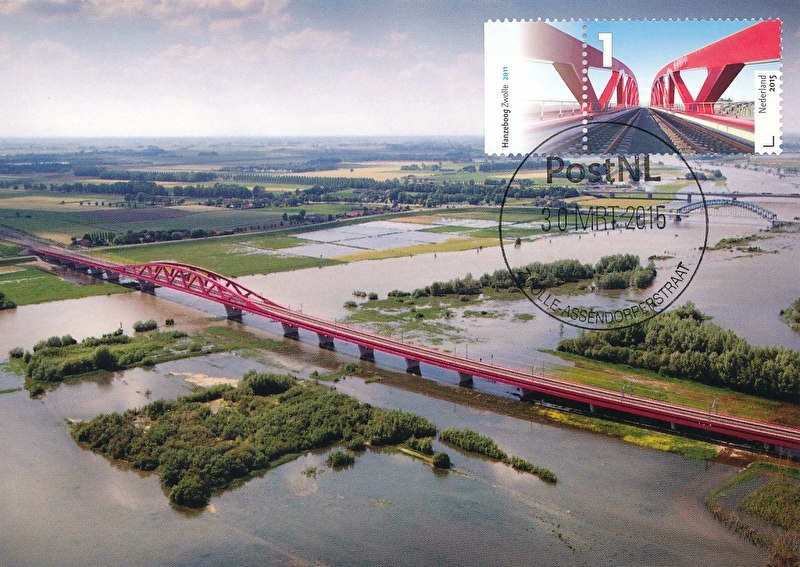   
This is the so-called Hanzeboog (Hanze Bow). It spans the river IJsseland is part of the line Utrecht - Kampen en Lelystad - Zwolle line which was opened in December 2012. This new bridge is high enough for ships to pass under it, so there are no movable parts in this bridge. It is a kilometre in length and rests on 18 concrete pillars. The design is by Quist Wintermans Architects. The bridge was used for the first time in the direction of Amersfoort-Zwolle during the Easter weekend of 2011 and in the direction of Zwolle-Amersfoort during the Pentecost weekend of the same year. |
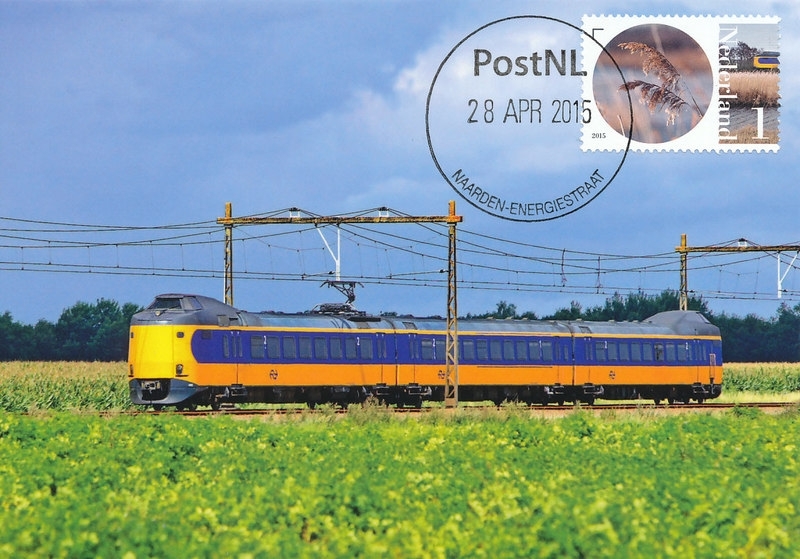 
Naardermeer was the first area of natural beauty that was bought by the foundation for Natural monuments (Dutch: Natuurmonumenten) in 1906 and thus became the first nature reserve in the Netherlands. Part of a sheet of 10 are two stamps with a railway related subject. In 1874 the Eastern Railway (Oosterspoorweg) between Amsterdam and Amersfoort was realised. This railway line crosses the Naardermeer lake from west to east. In 1987 the Flevolijn came into use. This line runs along the northern border of the area. The connection between Oosterspoorweg and Flevolijn was constructed with dive-unders instead of fly-overs. The train you see here is a so-called Koploper, Plan Z. |

The Hague town hall with visible catenary for the streetcars. This town hall was designed by American architect Richard Meier. |
   
The New York park High Line (2,3 kms long) is built on the elevated railway of Manhattan which is no longer in use. |
 
This stamp is about one of the Golden Booklets, a series of popular children's books that have been published for sixty odd years now. Back to the top |
|
2016 |
 
Ed van der Elsken (1925-1990) was a Dutch photographer and filmmaker. Although feminin beauty is the main theme of the photographs on the stamp sheet, the first stamp of the sheet also shows a tram, probably an Amsterdam tram. Most of the photos on the Ed van der Elsken stamp sheet originate from his book EYE LOVE YOU (1977). |
|
2017 |
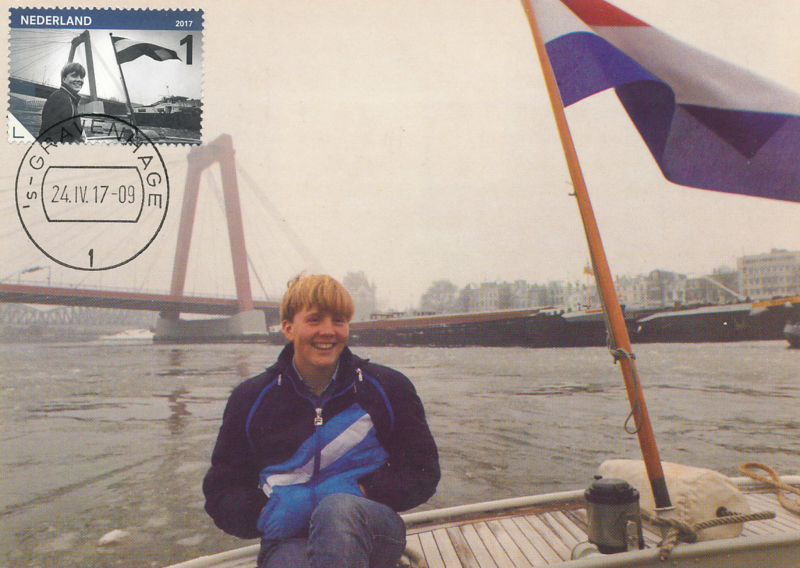     King Willem-Alexander in Rotterdam with part of Willemsbrug (William's Bridge) in the background. Back to the top |
 Tram rails in front of the 1951 industrial building at Goudsesingel in Rotterdam. Back to the top |
|
2018 |
 Tram in front of building "De Volharding" (=perseverance) in The Hague. Back to the top |
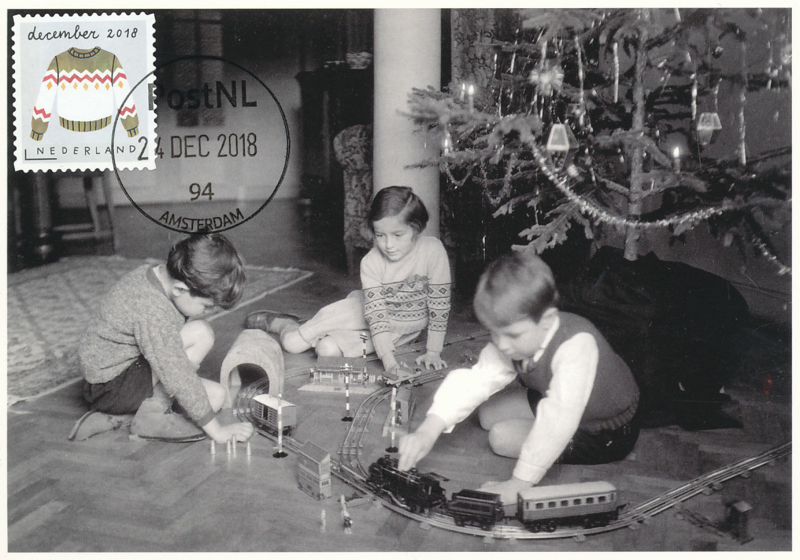 A tin plate train set was the ultimate X-mas gift in the fifties of the previous century. Back to the top |